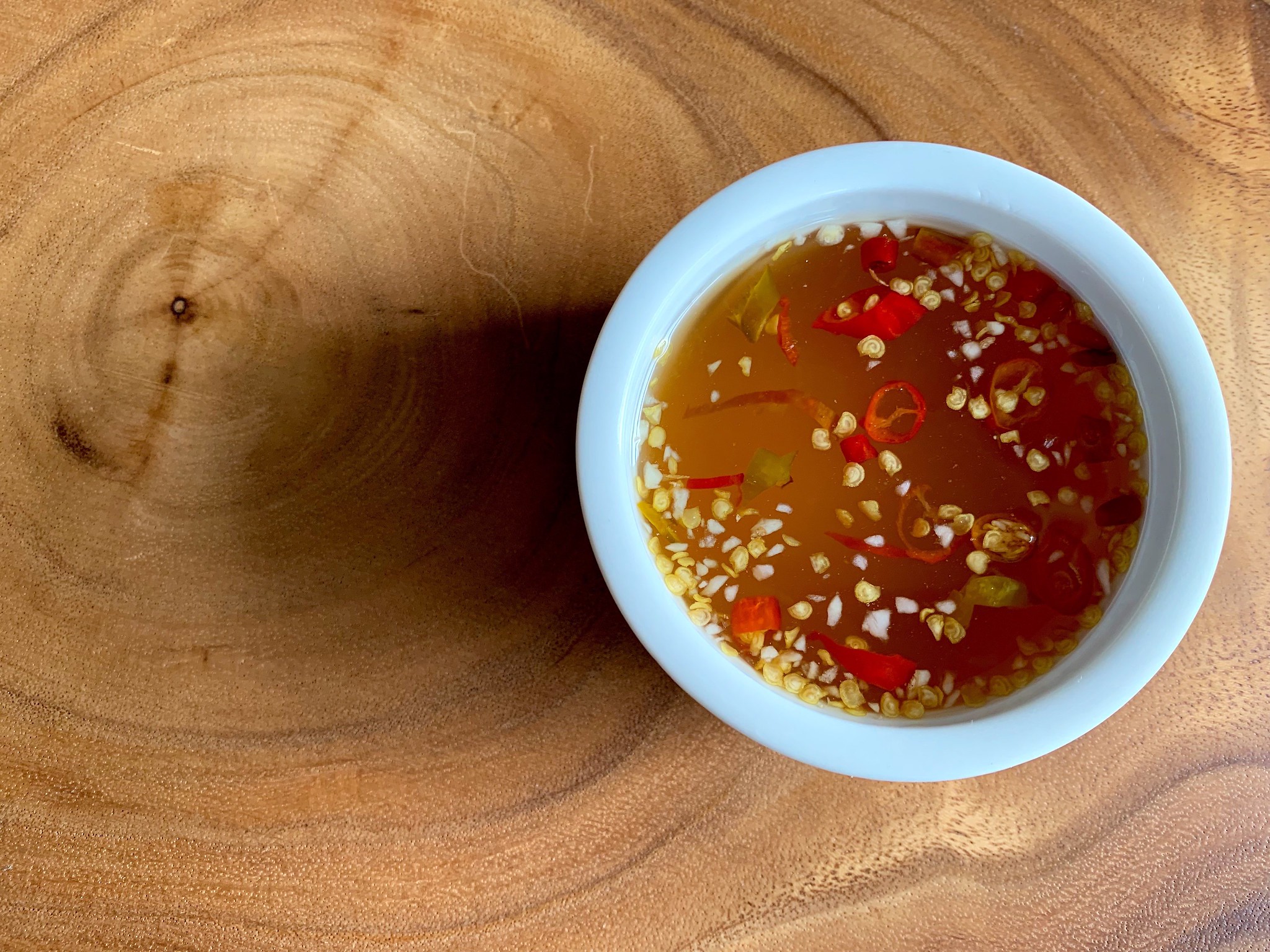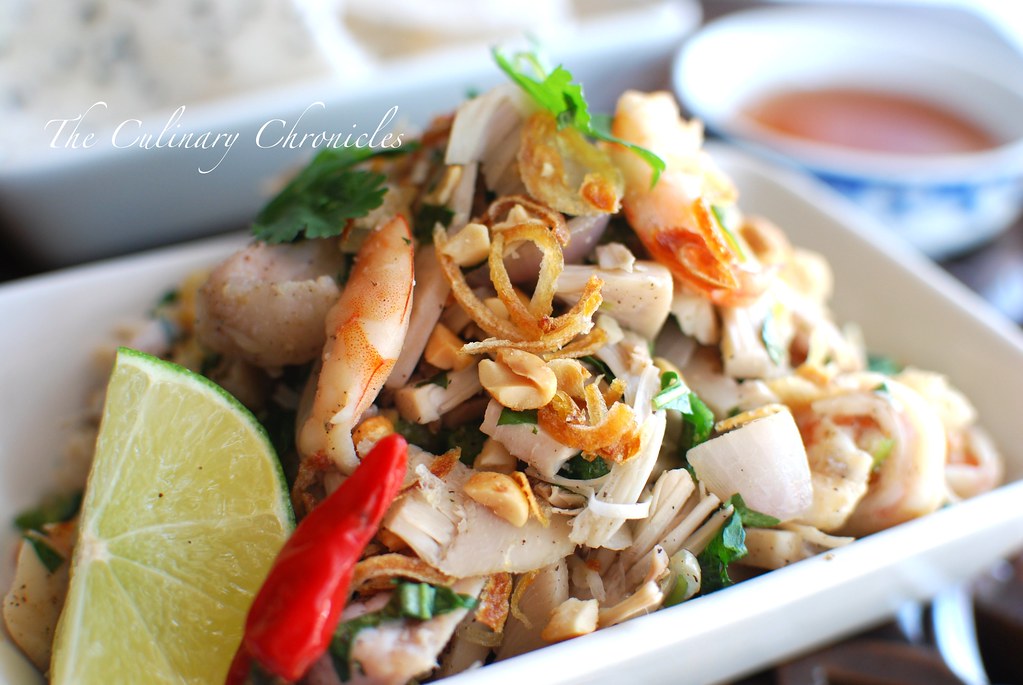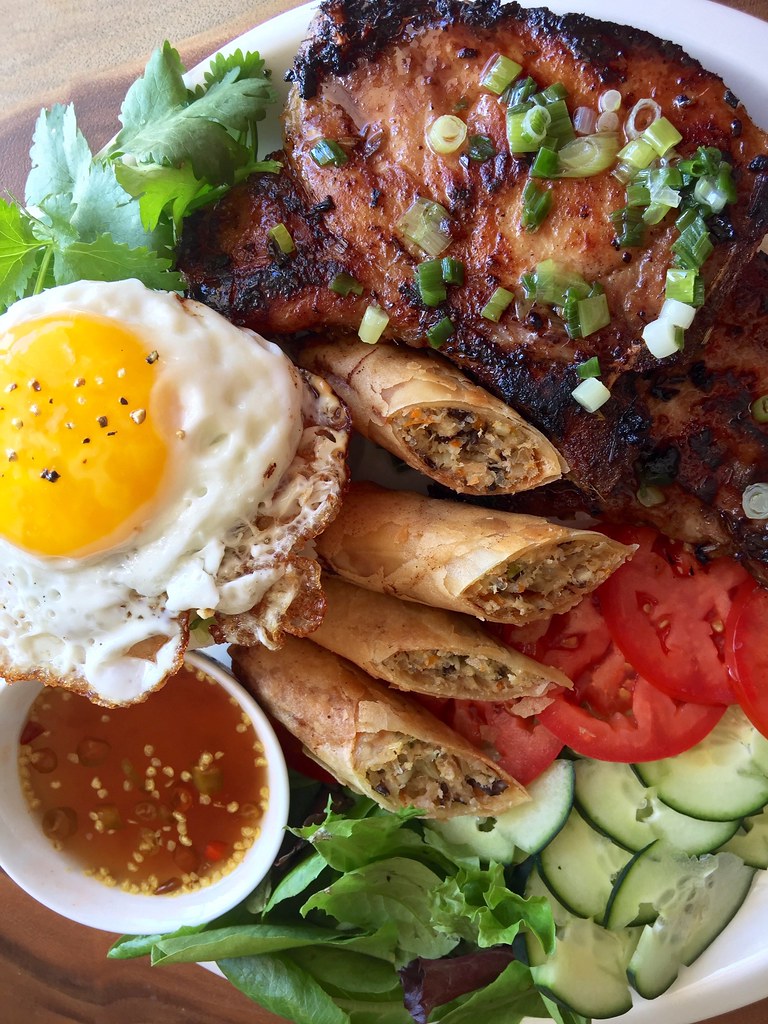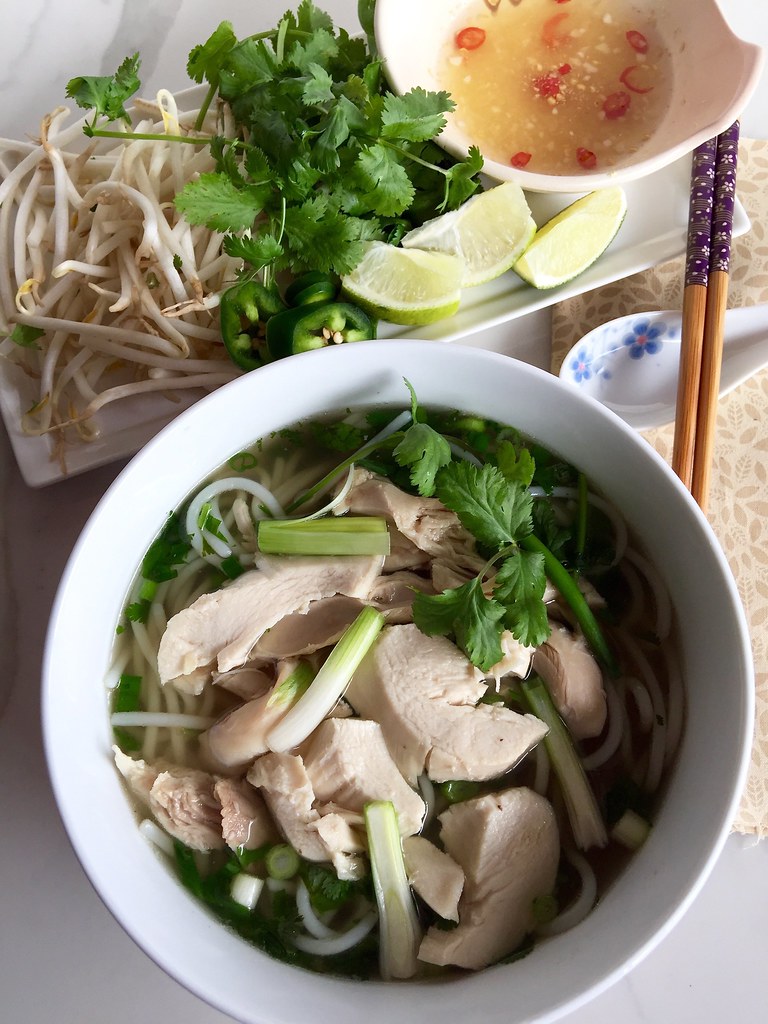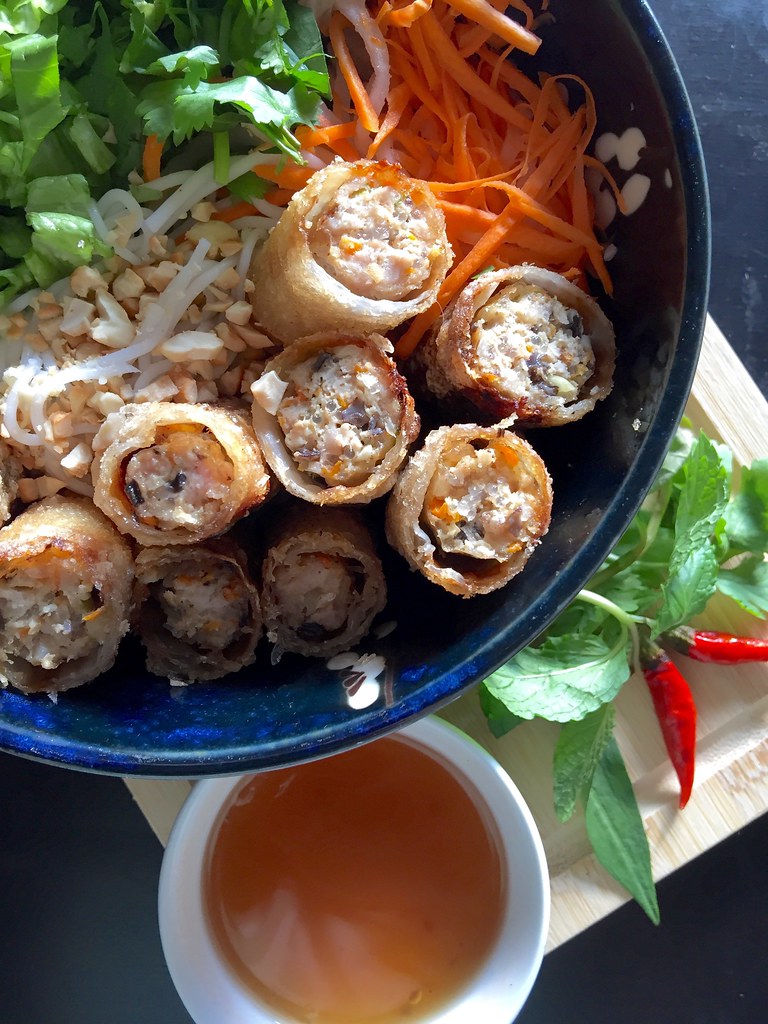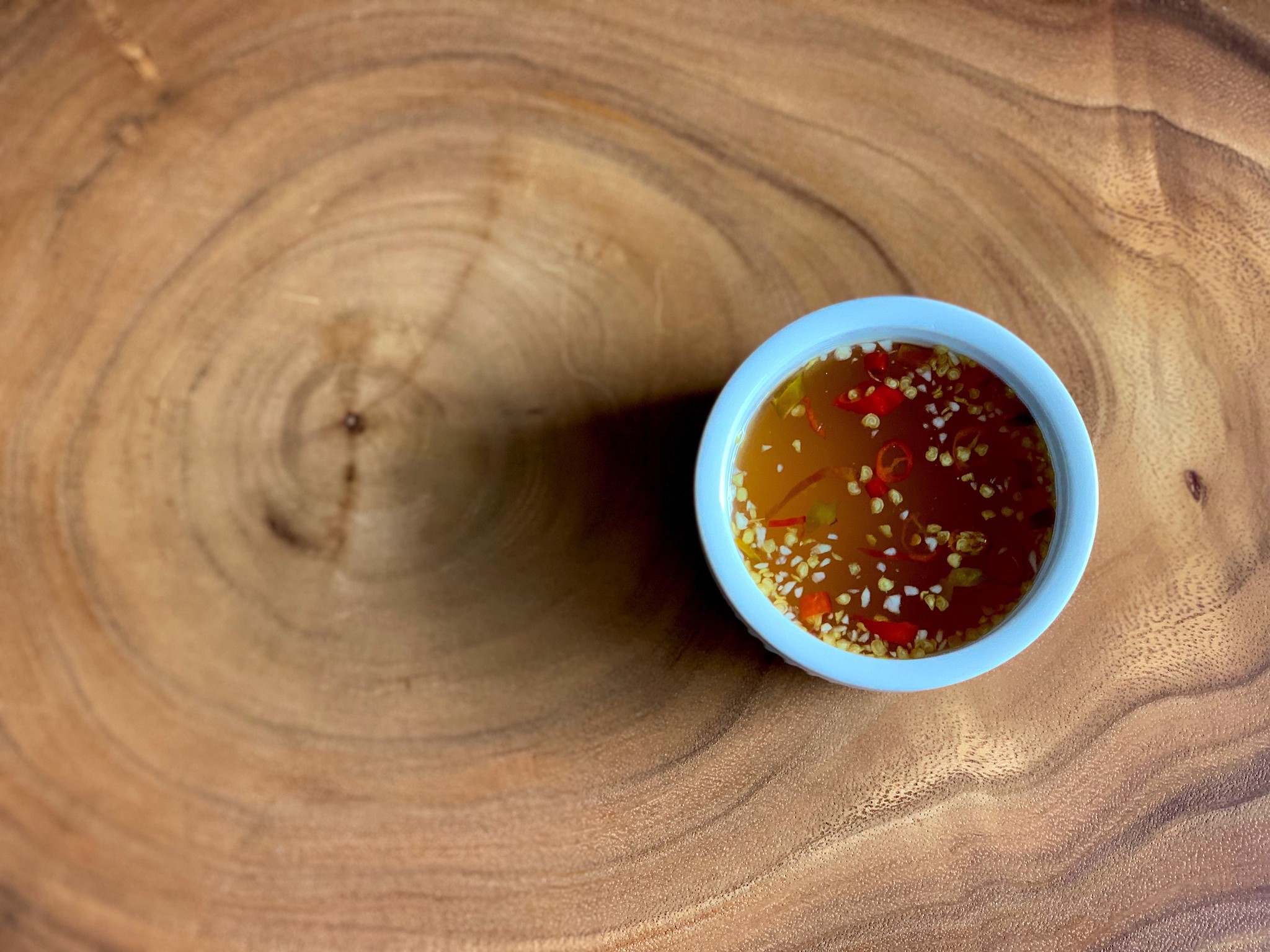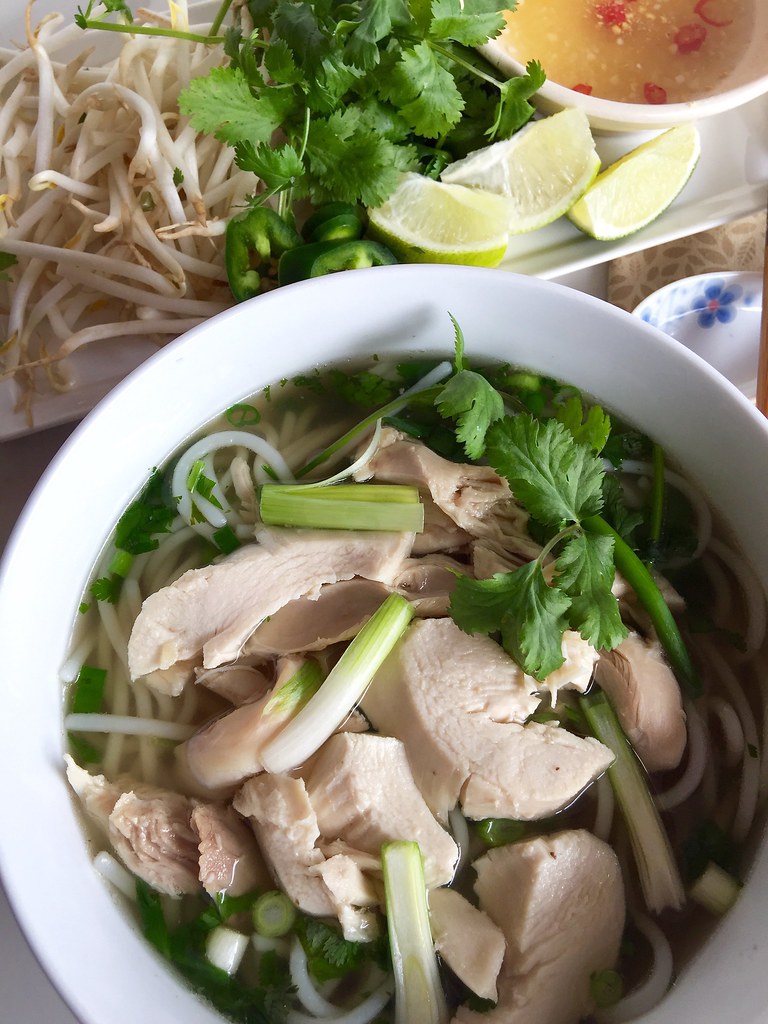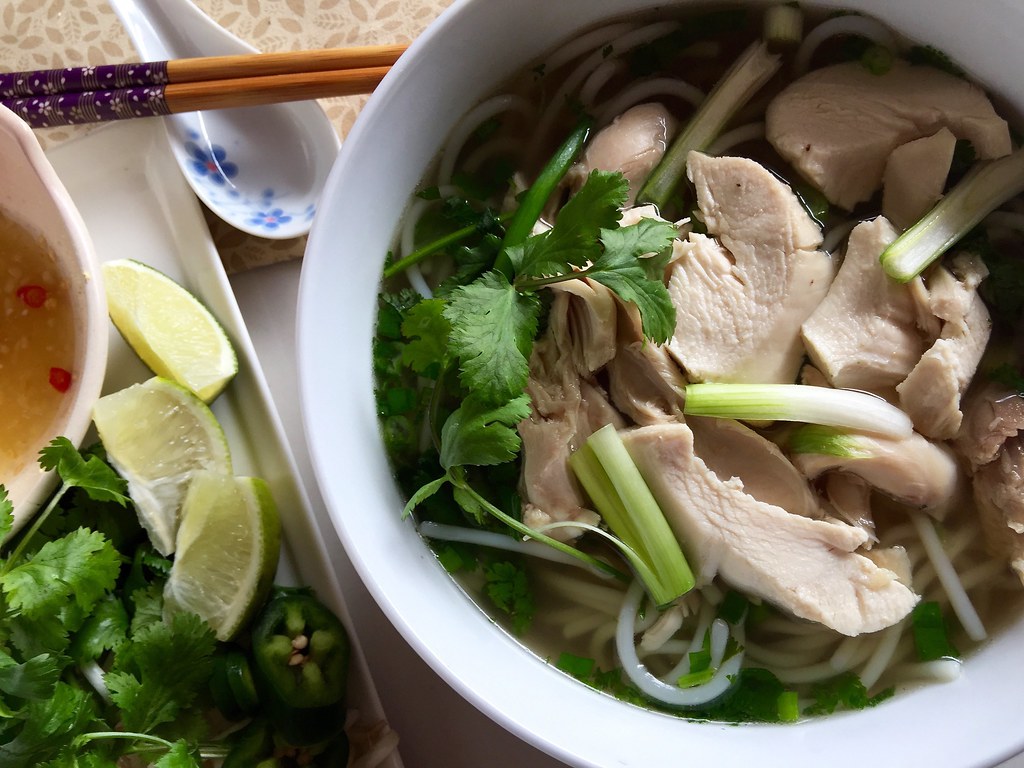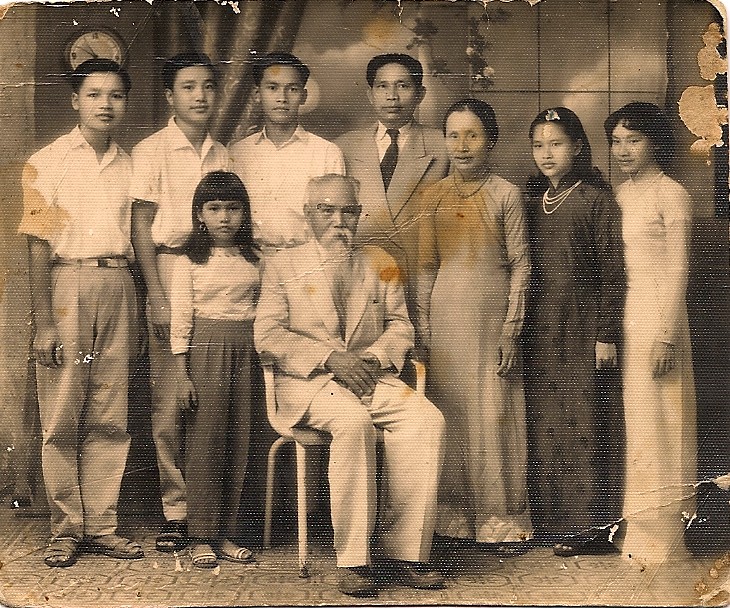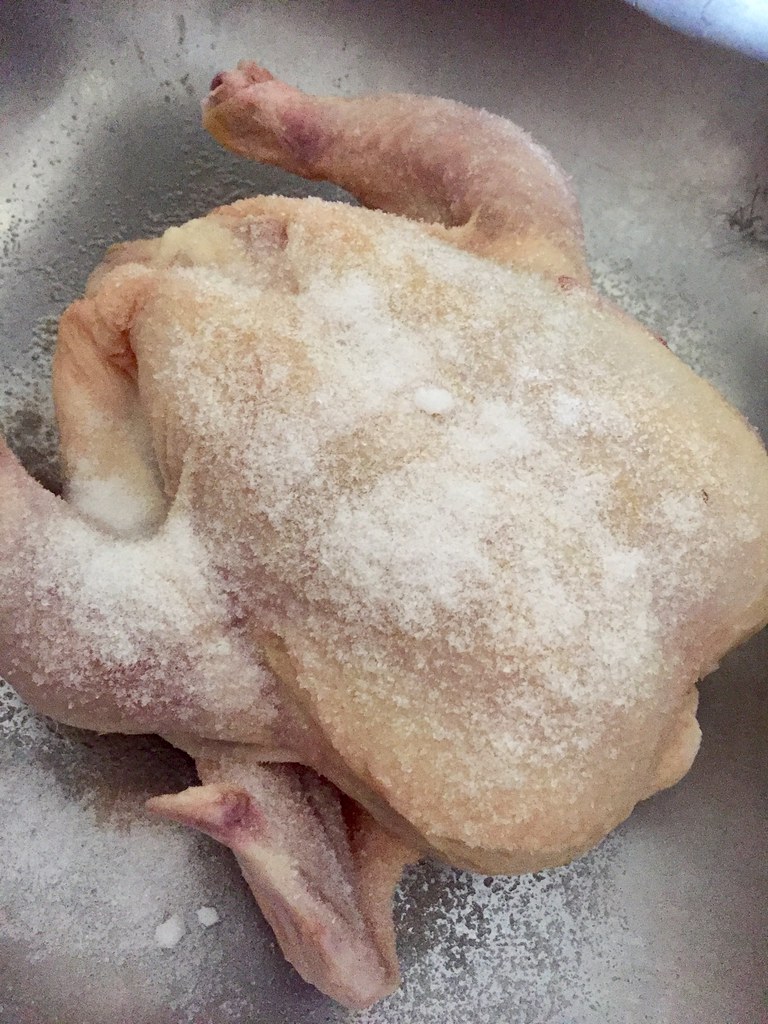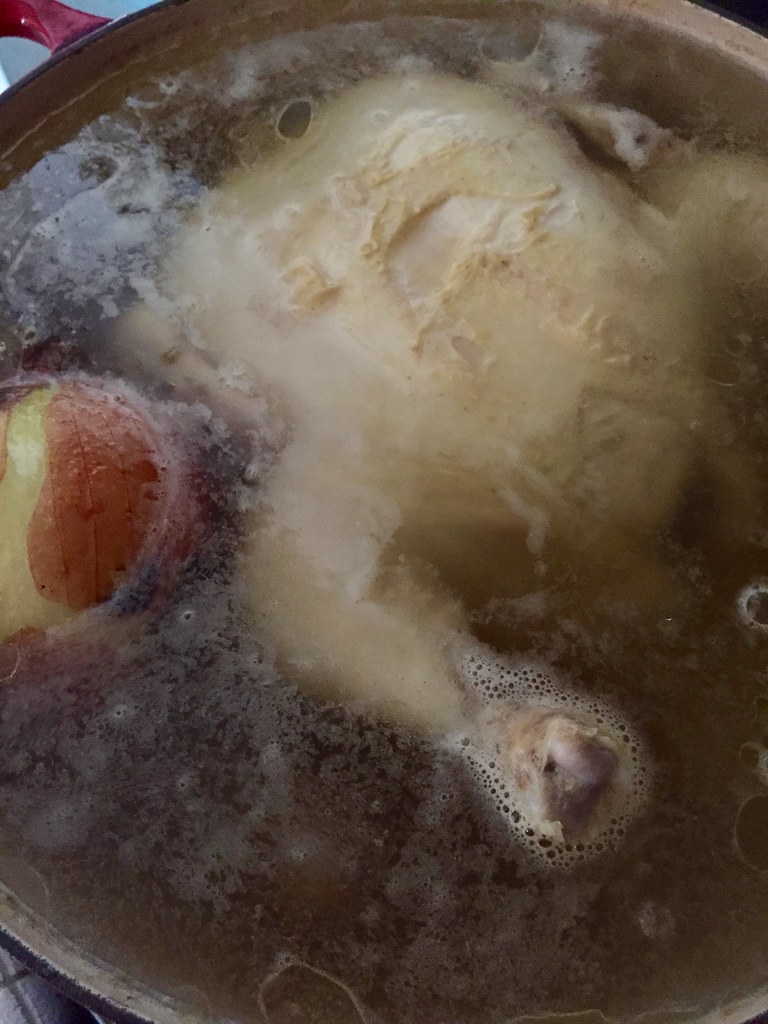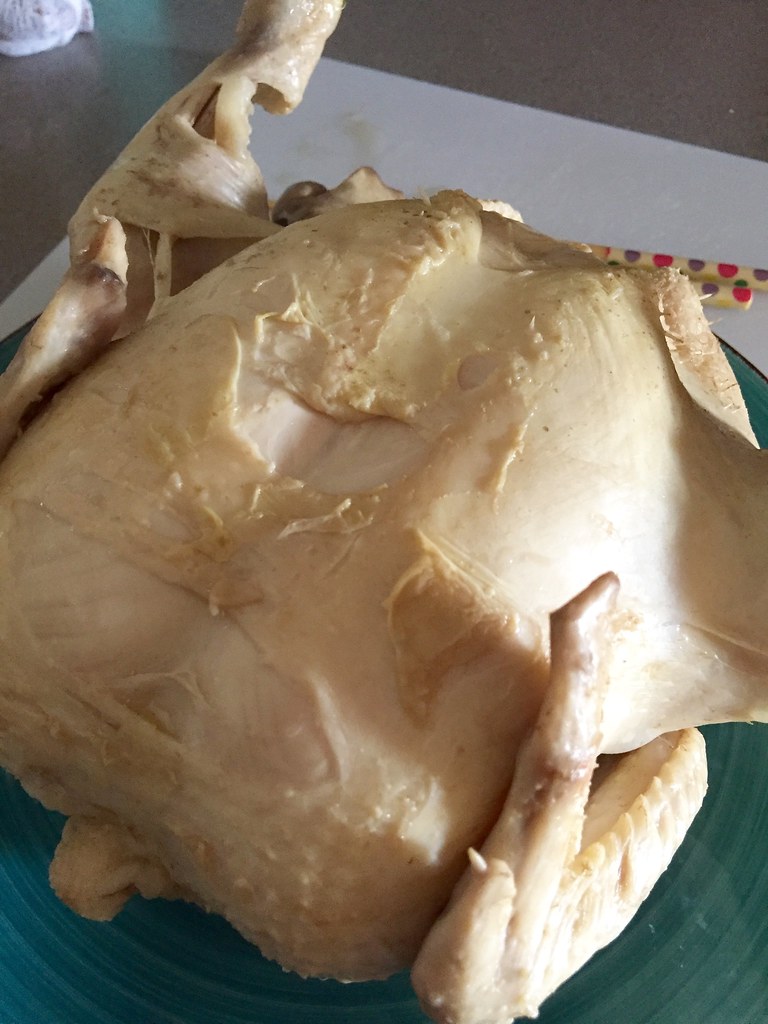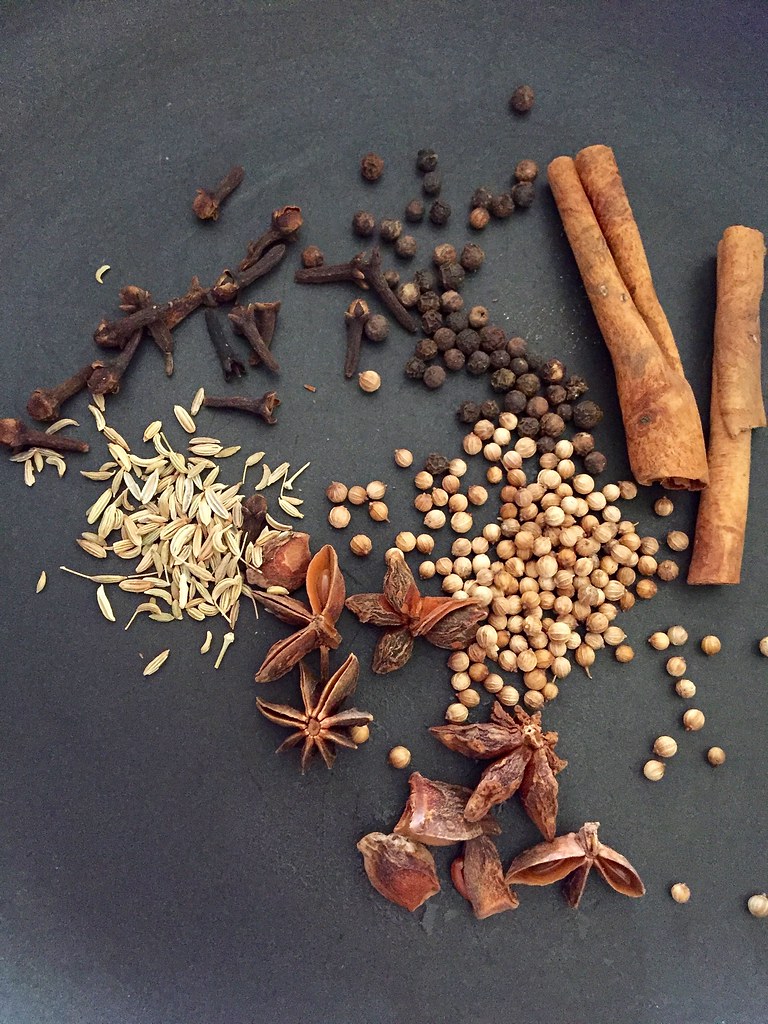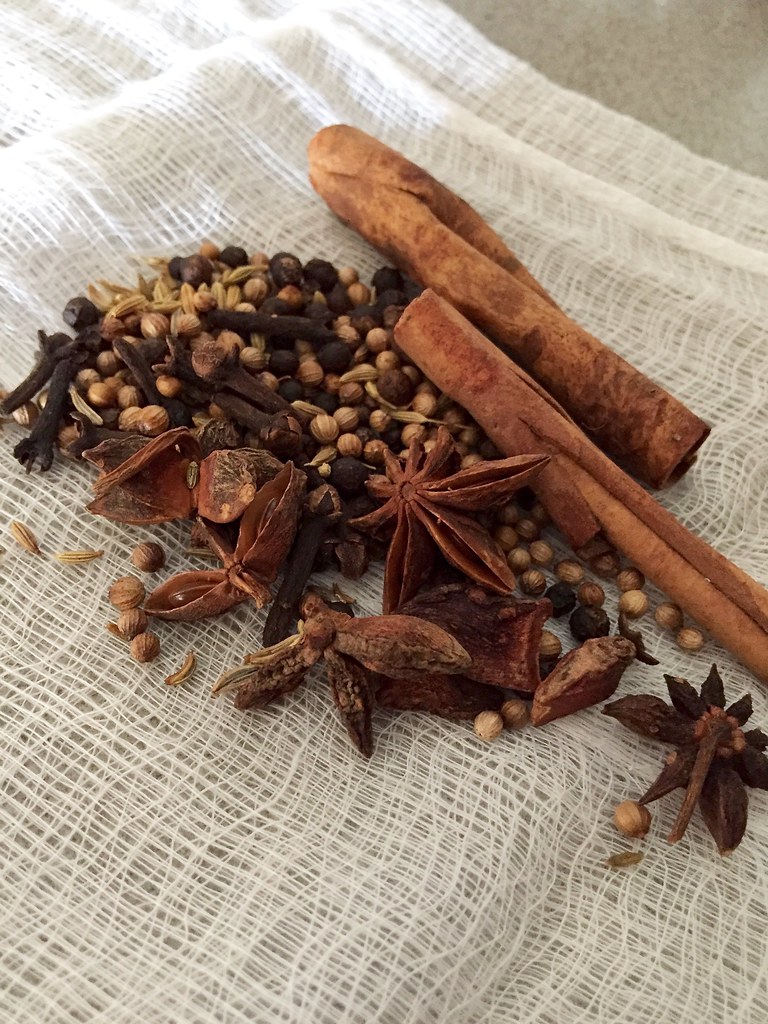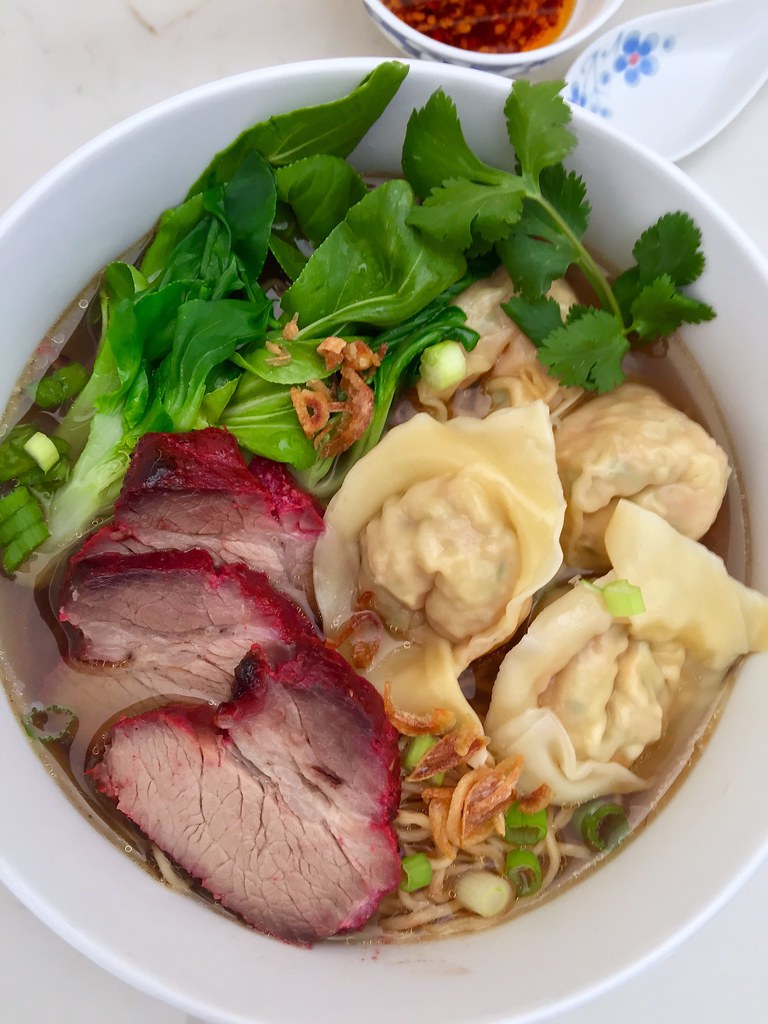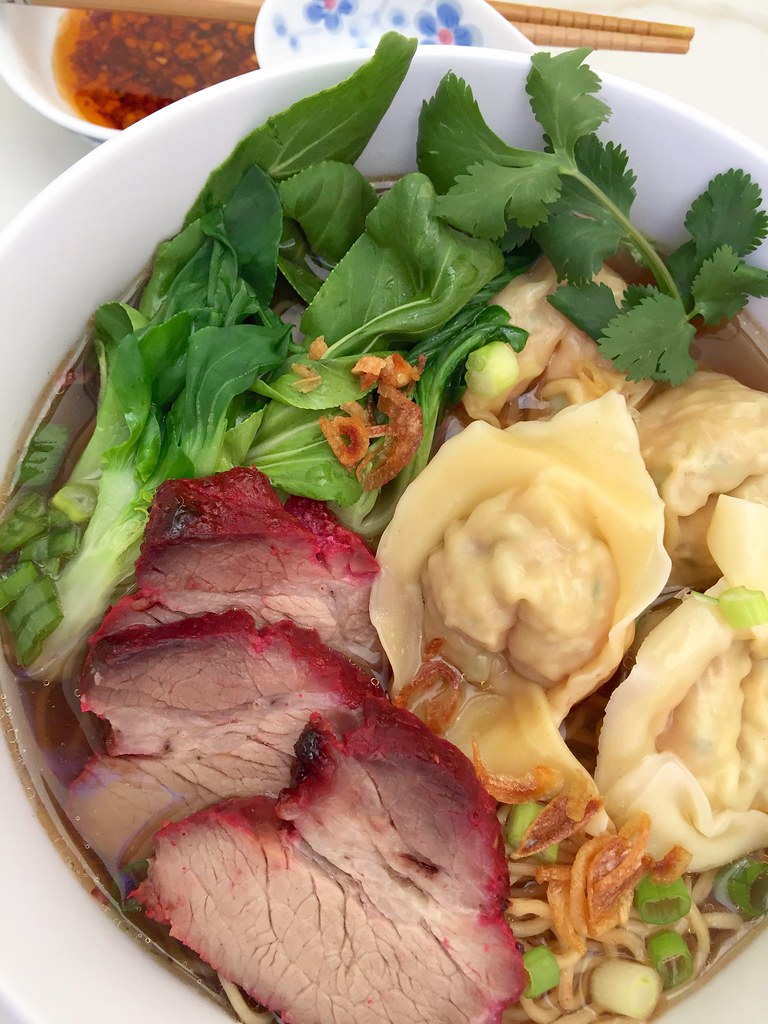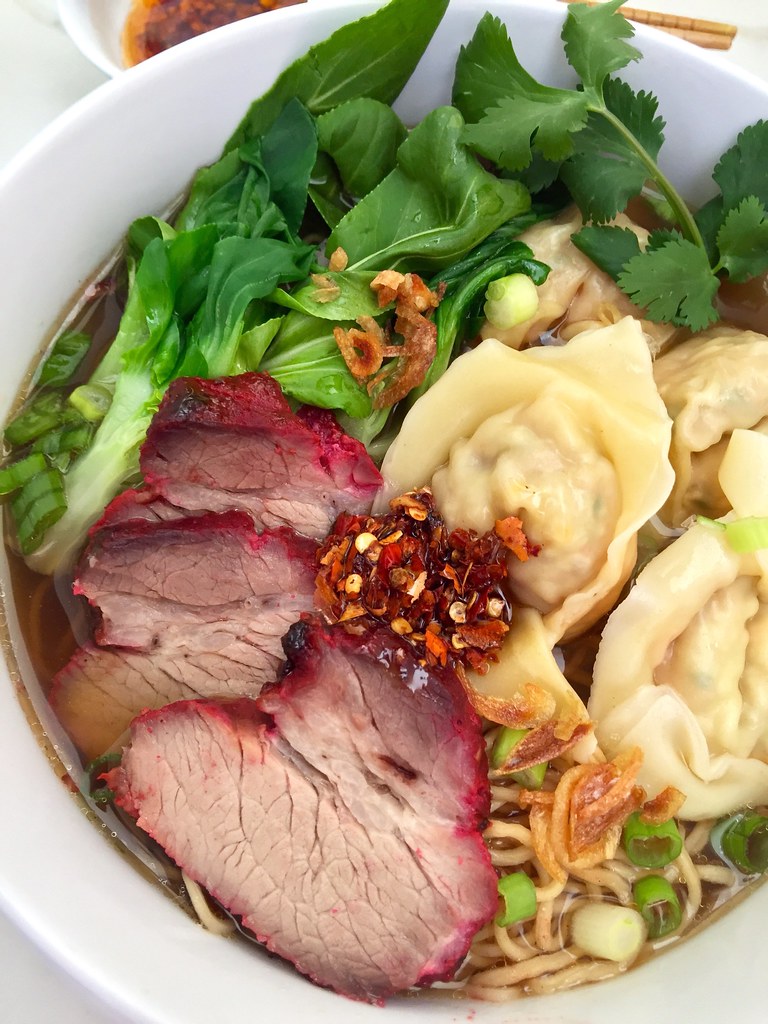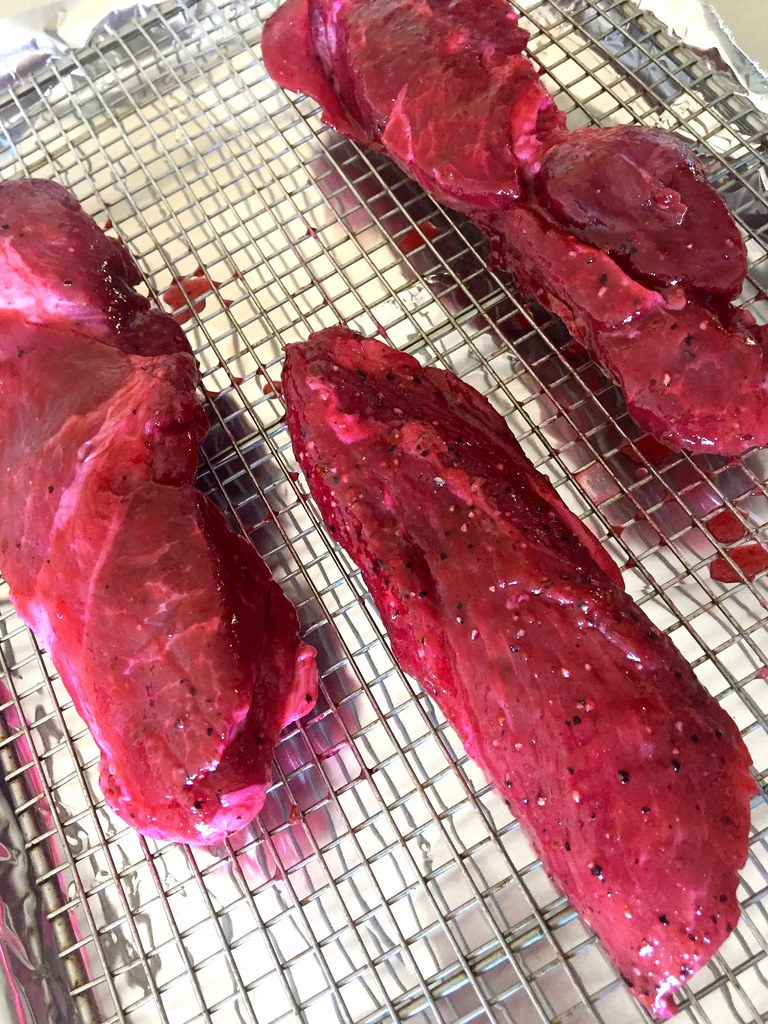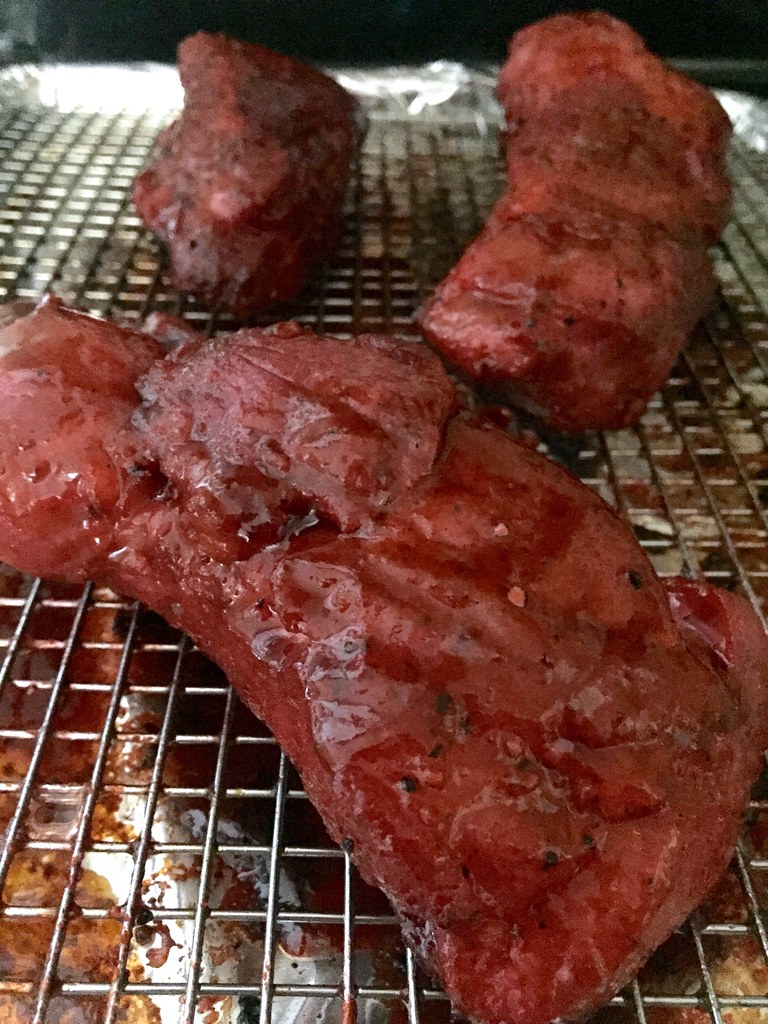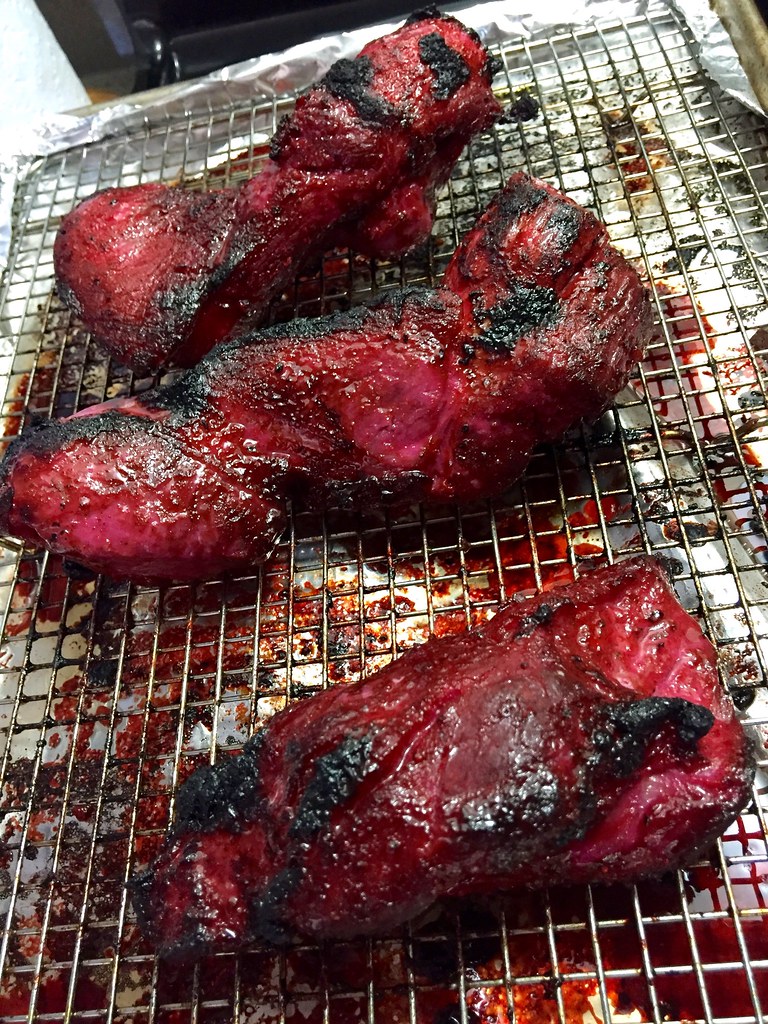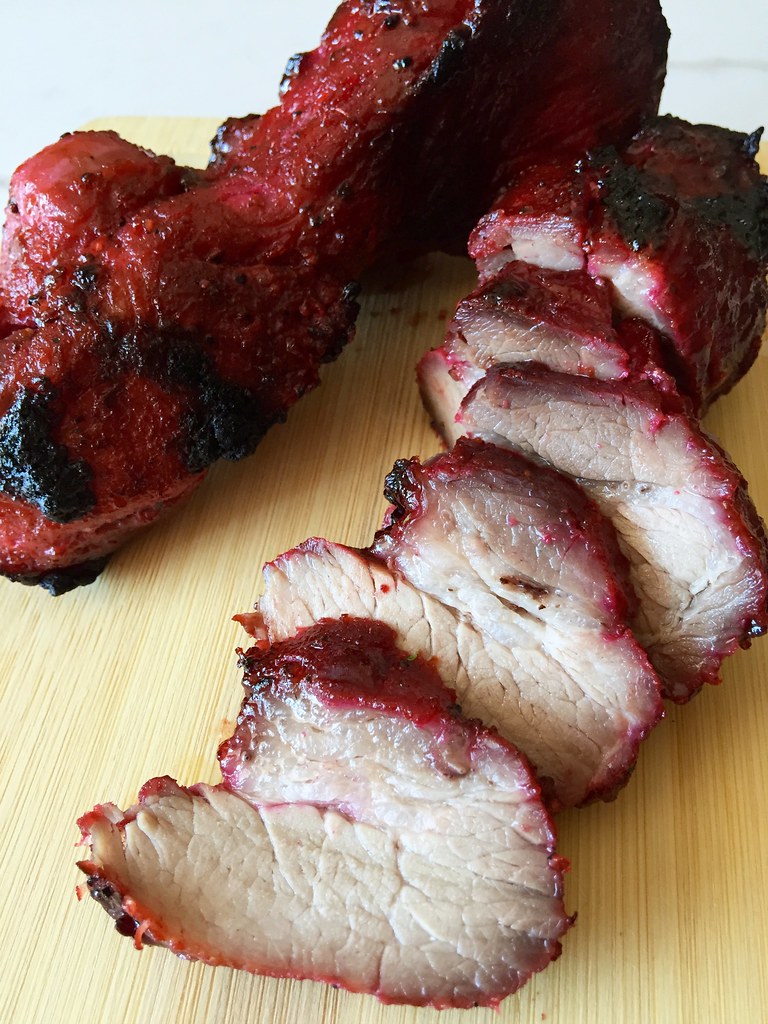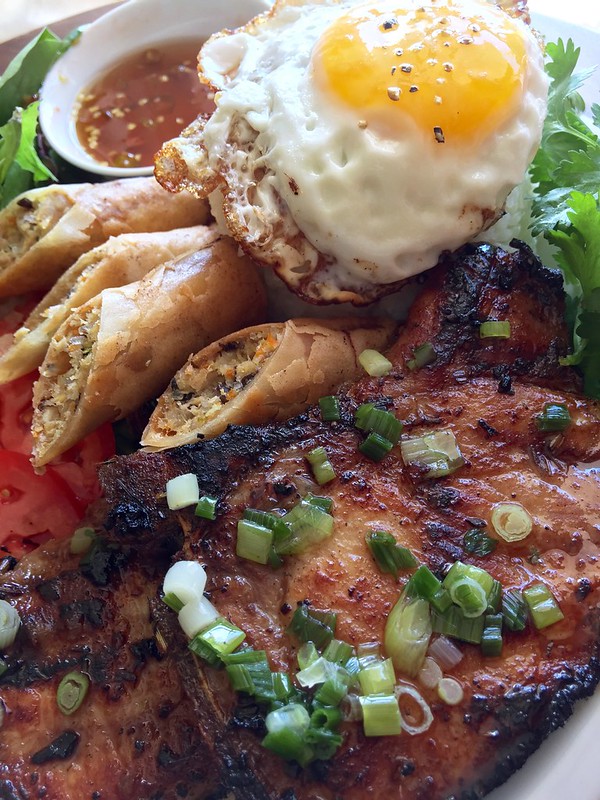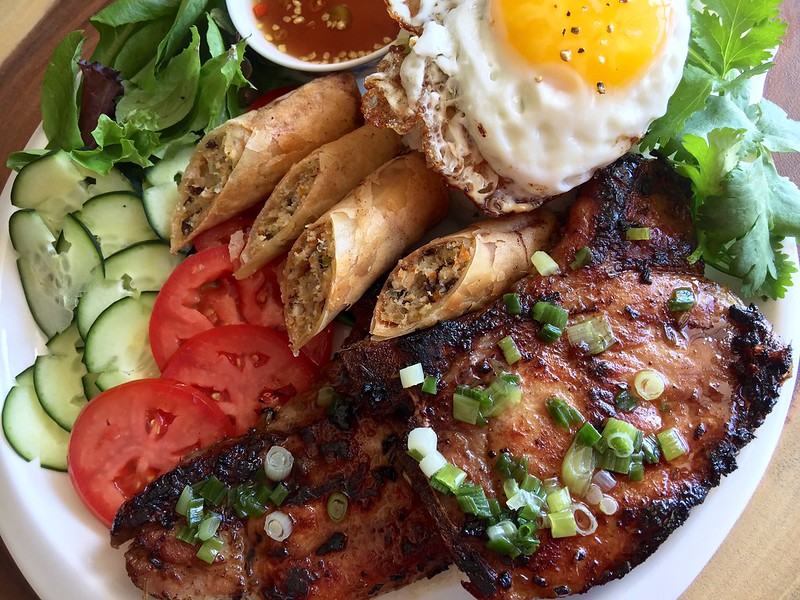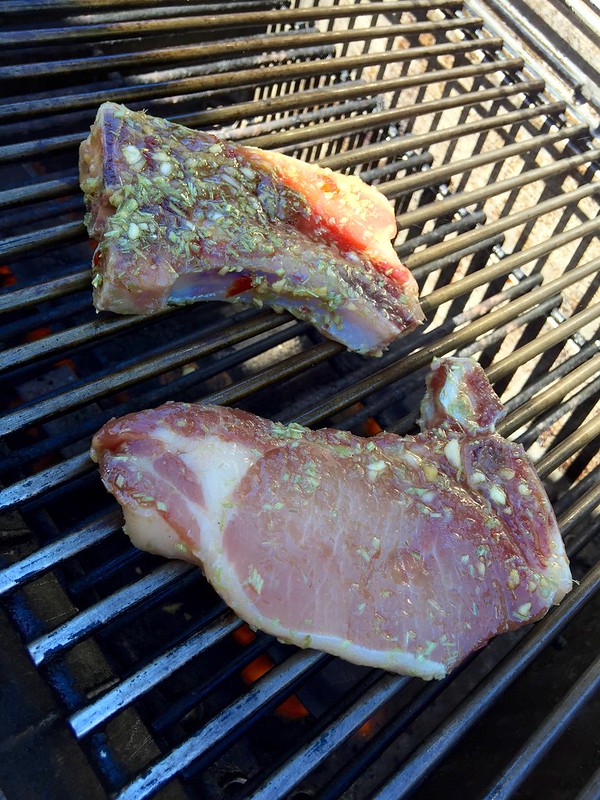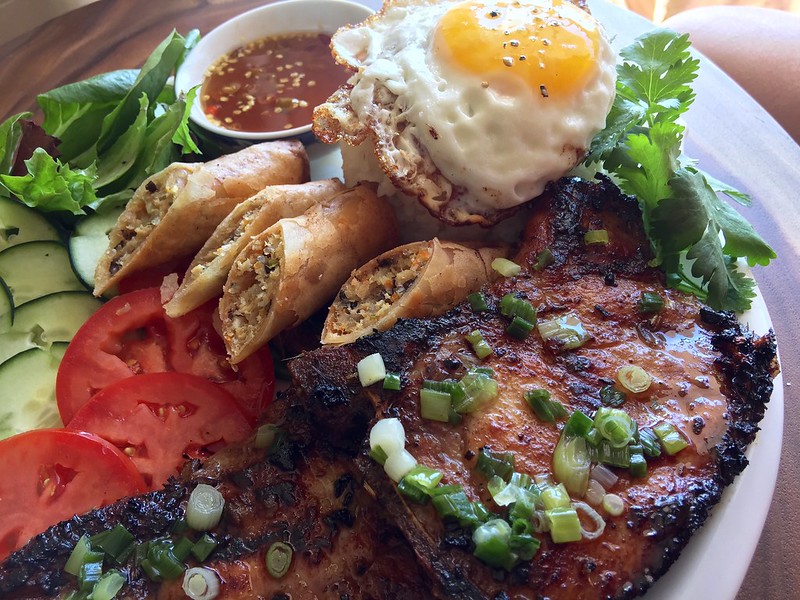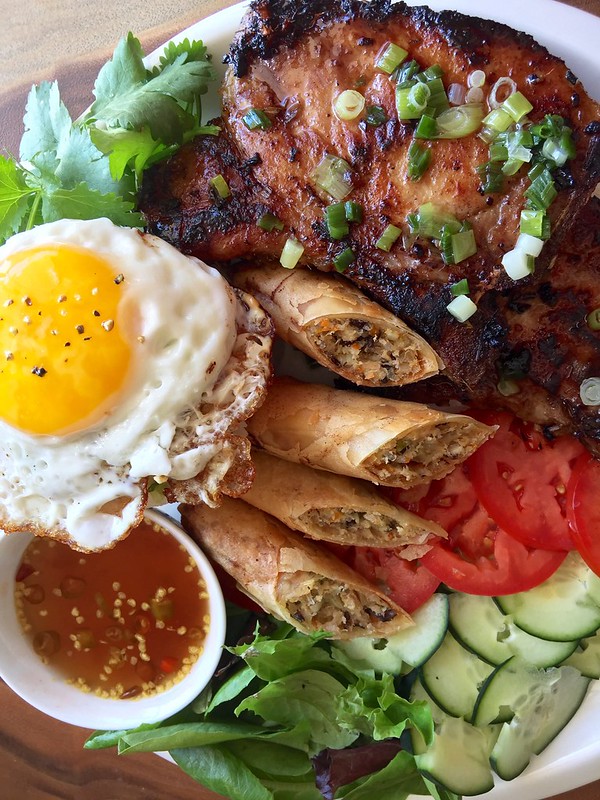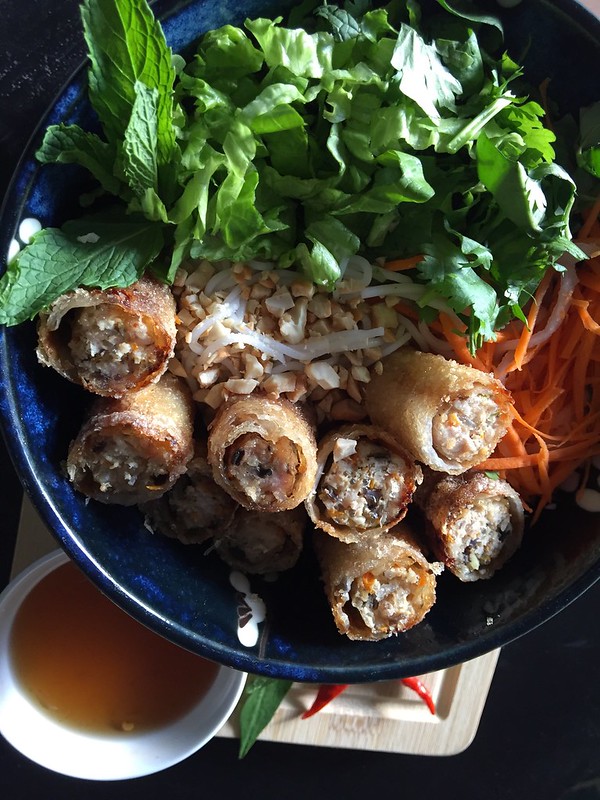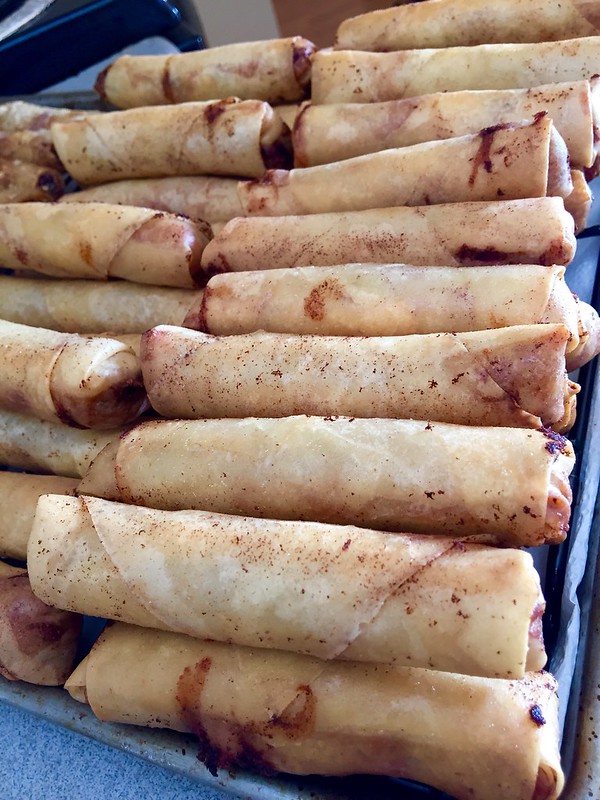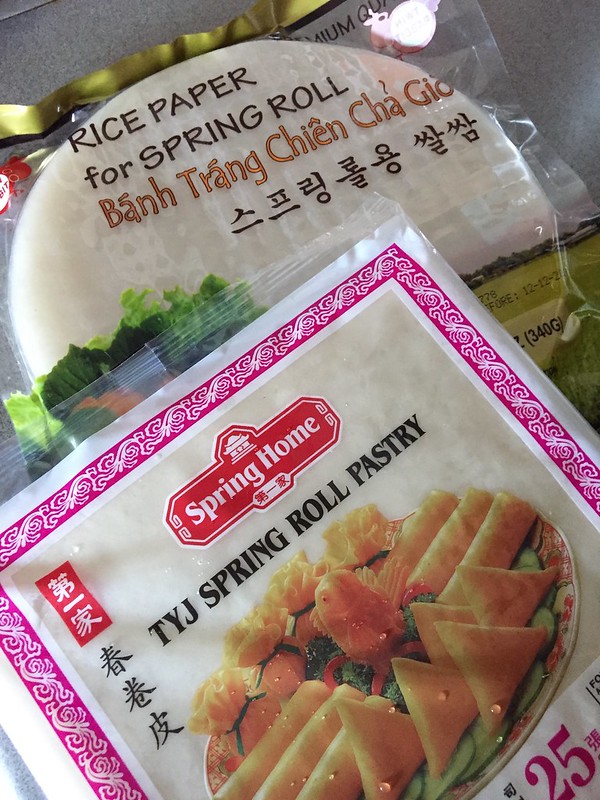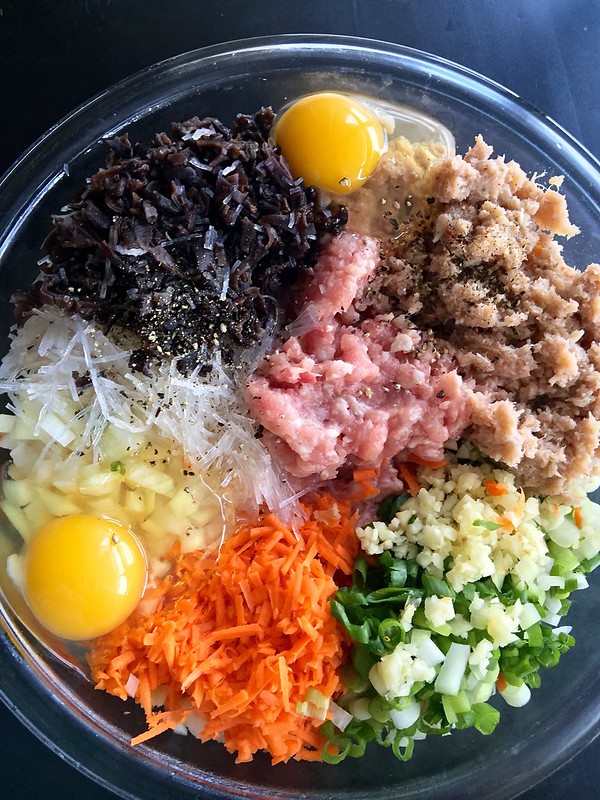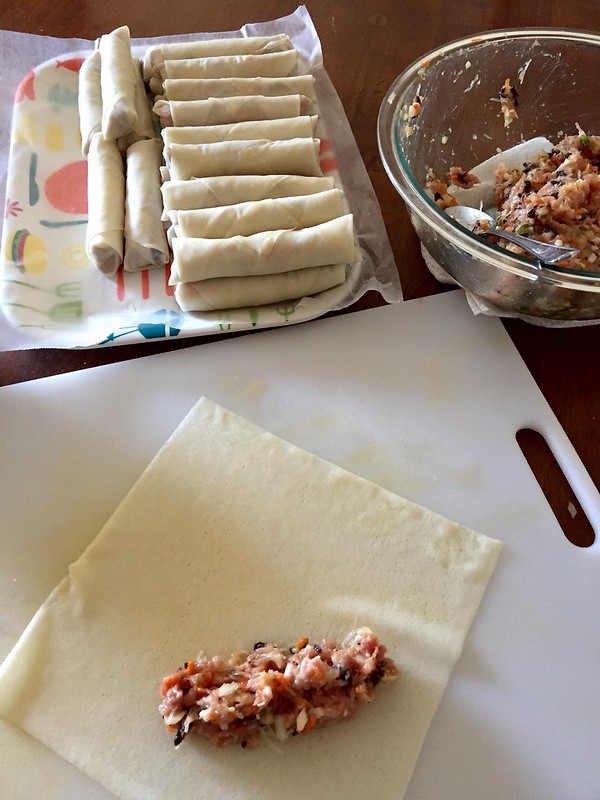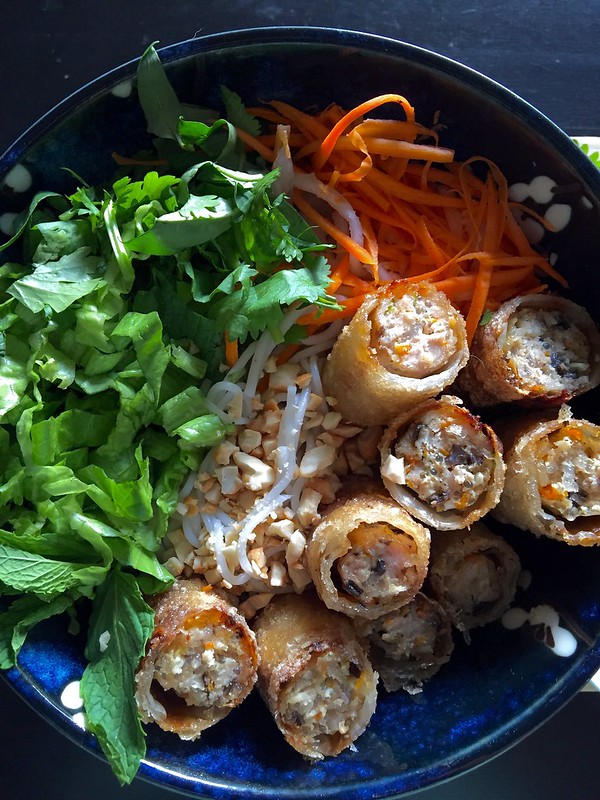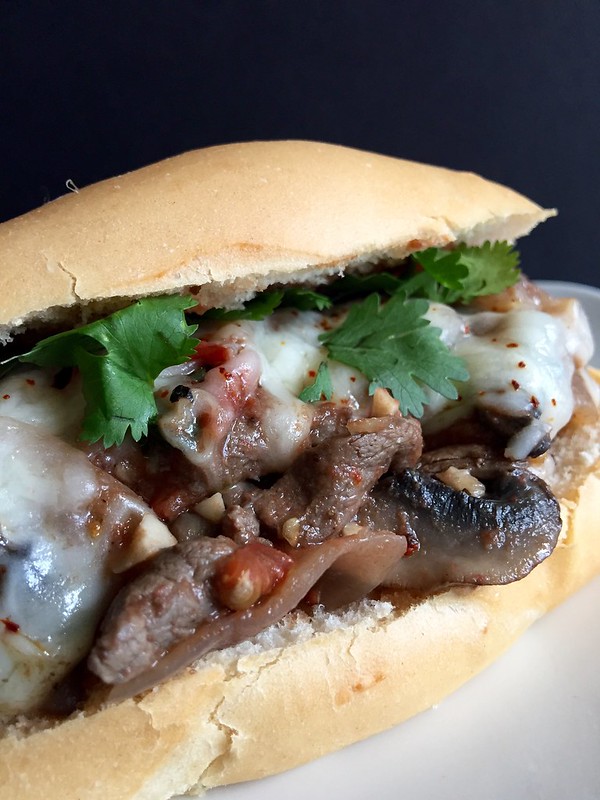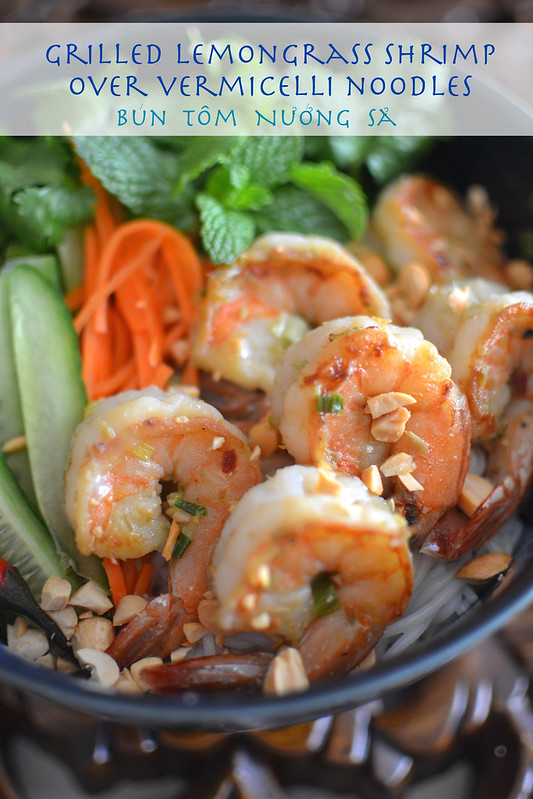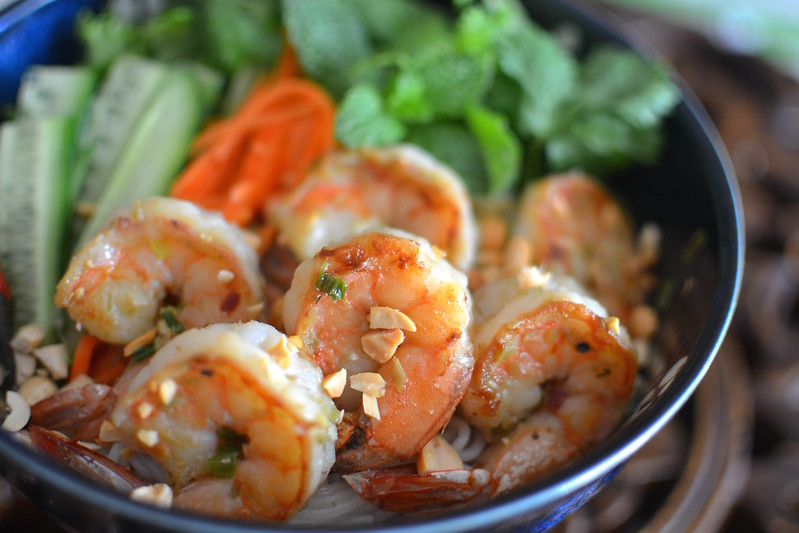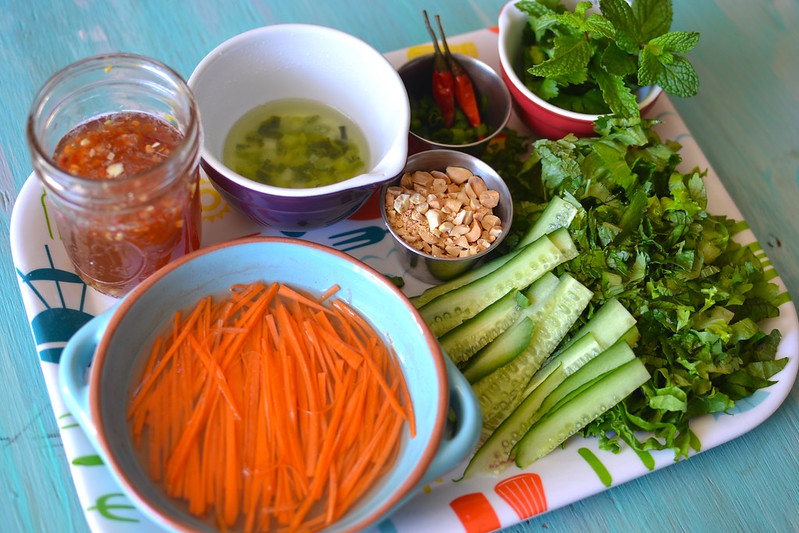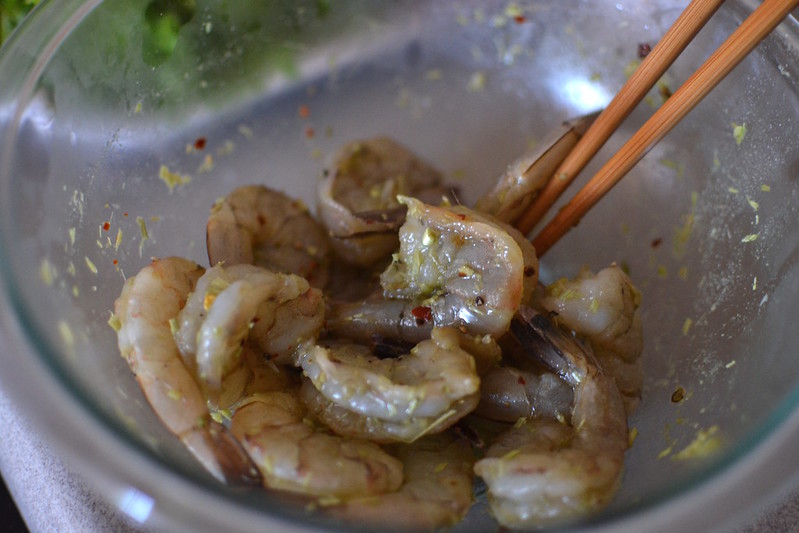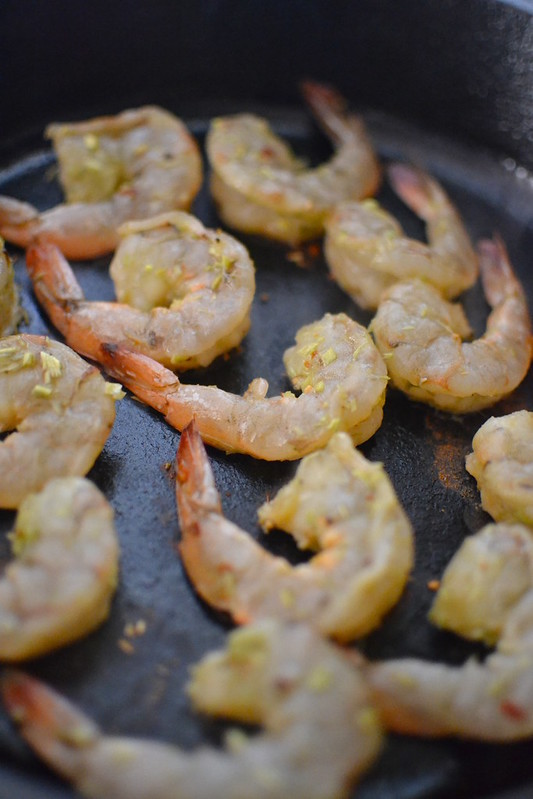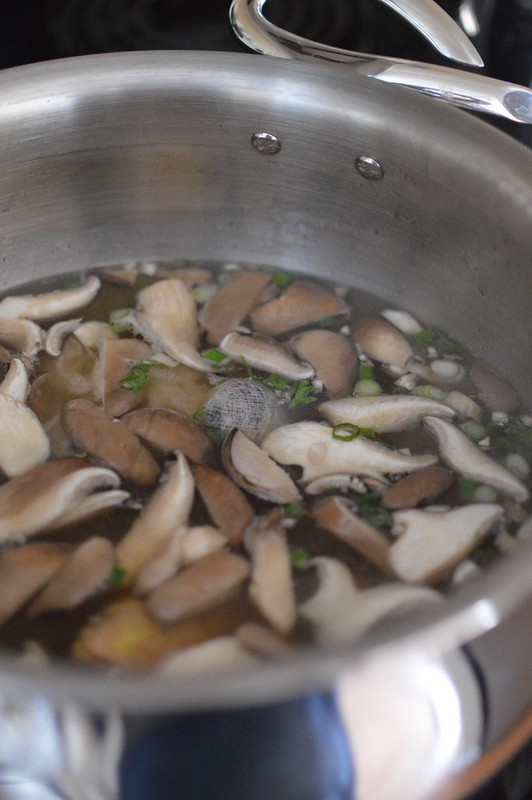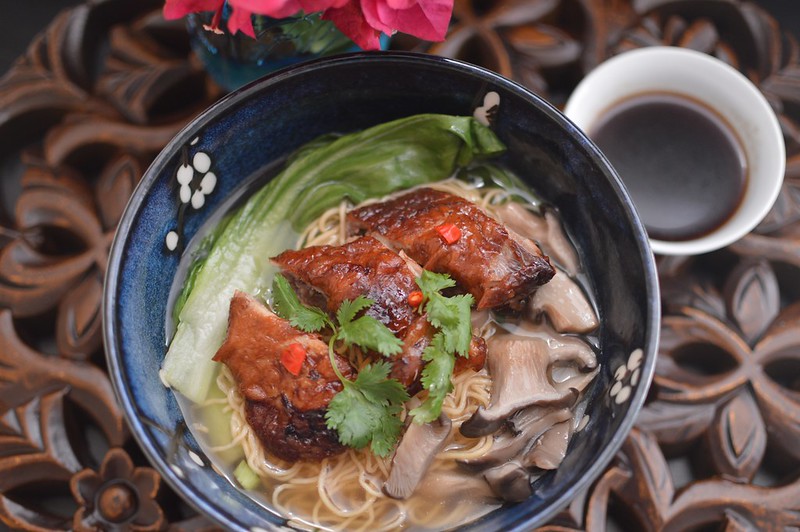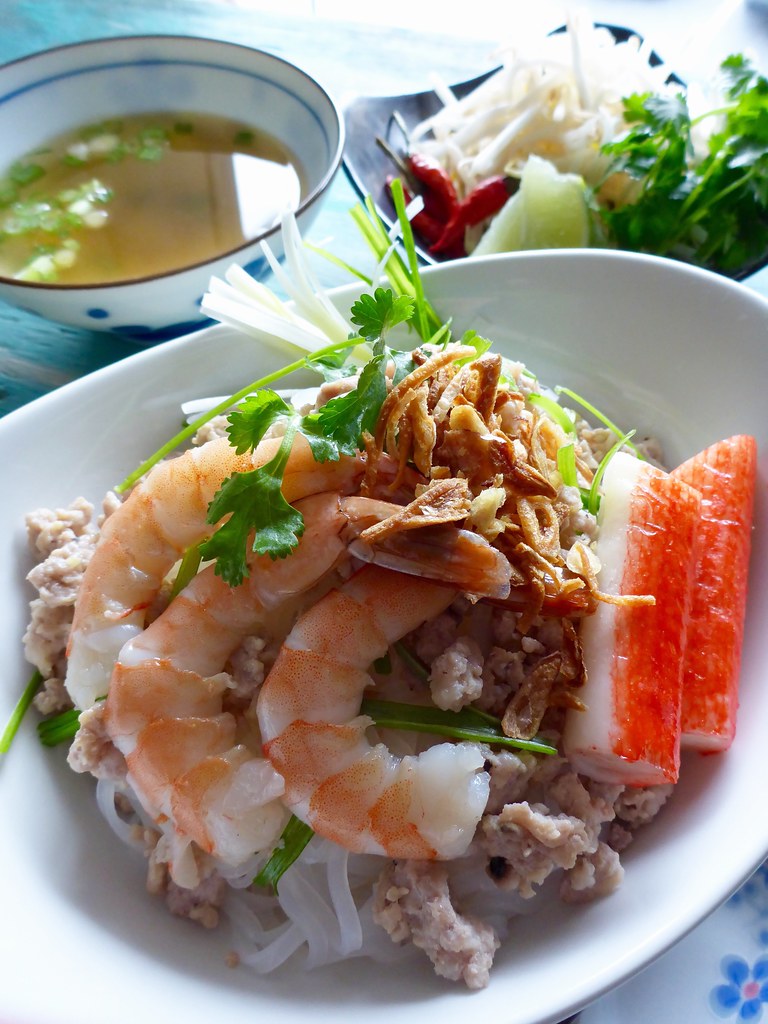
The East Coast has been experiencing some crazy snow storms lately –to the point that I’m sure that the White Walkers are just vacationing around there until Season 8 of GoT is released. Or at least until a release date is announced.
Just thinking about it makes me shudder and want to bundle up. But before you laugh at me, know that it’s actually been cold in San Diego these past few weeks—even by non-Southern Californian terms. We’re talking in the 30 degrees F in the late nights/early mornings! BRRRRRR!!!!
Maybe a straggling Walker wanted to check out Disneyland?

I’m constantly cold. Which is why I have been nonstop cooking and eating soups lately–noodle soups, mostly. Can you blame me?
I’ve been getting my full of chowders, ramen, wonton noodle soups and of course, Phở. Hey-I need comfort food! But as much as I love phở, there are so many other noodle dishes in Vietnamese cuisine than the popular soup.
There’s Miến (glass noodles), Bún Riêu (tomato & freshwater crab noodles), Bánh Canh (Udon-like noodles), Bún Măng Vịt (bamboo and duck noodles) and Bún Thang (Northern Vietnamese chicken-based noodles)……
But my favorites are Bún Bò Huế (spicy beef noodles) and Mì Quảng (seafood & pork turmeric noodles).
SUPER NGON!!!
Translation: SUPER DELICIOUS!!!
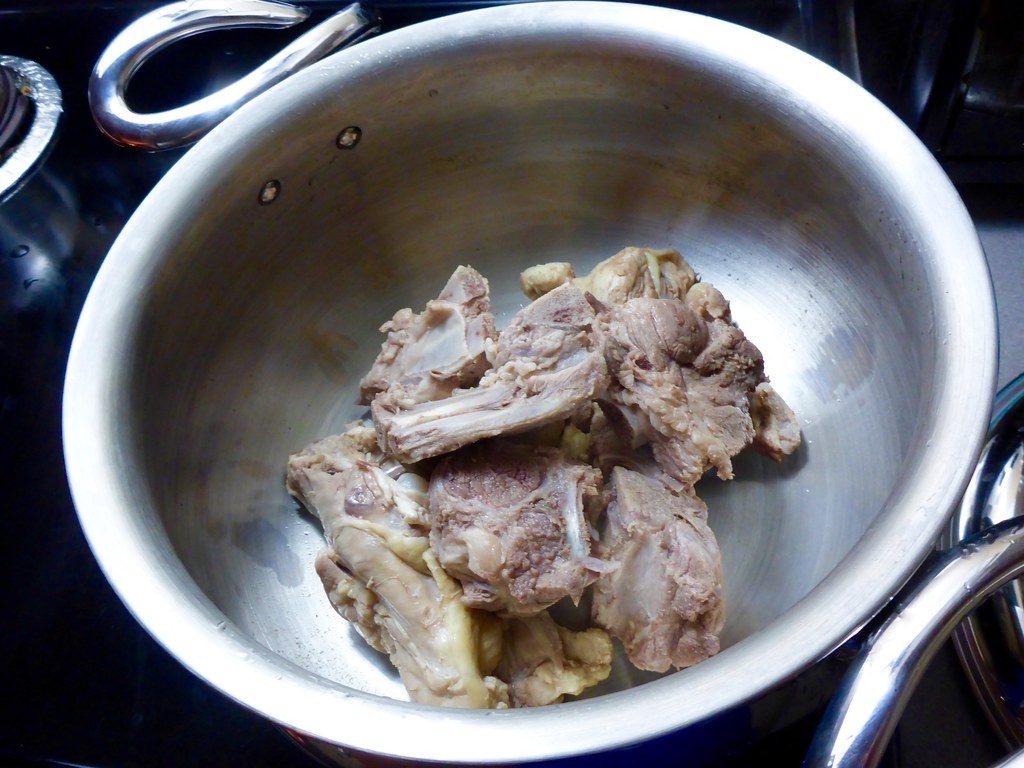
Though I’ve got to tell you — I do LOVE me a big bowl of Hủ Tiếu.
Which type of Hủ Tiếu?
Well, that’s where things get a bit difficult because depending on who you ask, the “variations”, well…….vary.
There’s Hủ Tiếu Nam Vang which is considered the Vietnamese version of the Cambodian noodle soup from Phnom Penh.
There’s Hủ Tiếu Mỹ Tho which is the signature noodle dish of the city Mỹ Tho located in the Tiền Giang Province on the Mekong Delta.
And there’s also Hủ Tiếu Tàu, which just translates to Chinese Hủ Tiếu. Yeah…they could have been more creative with that one.
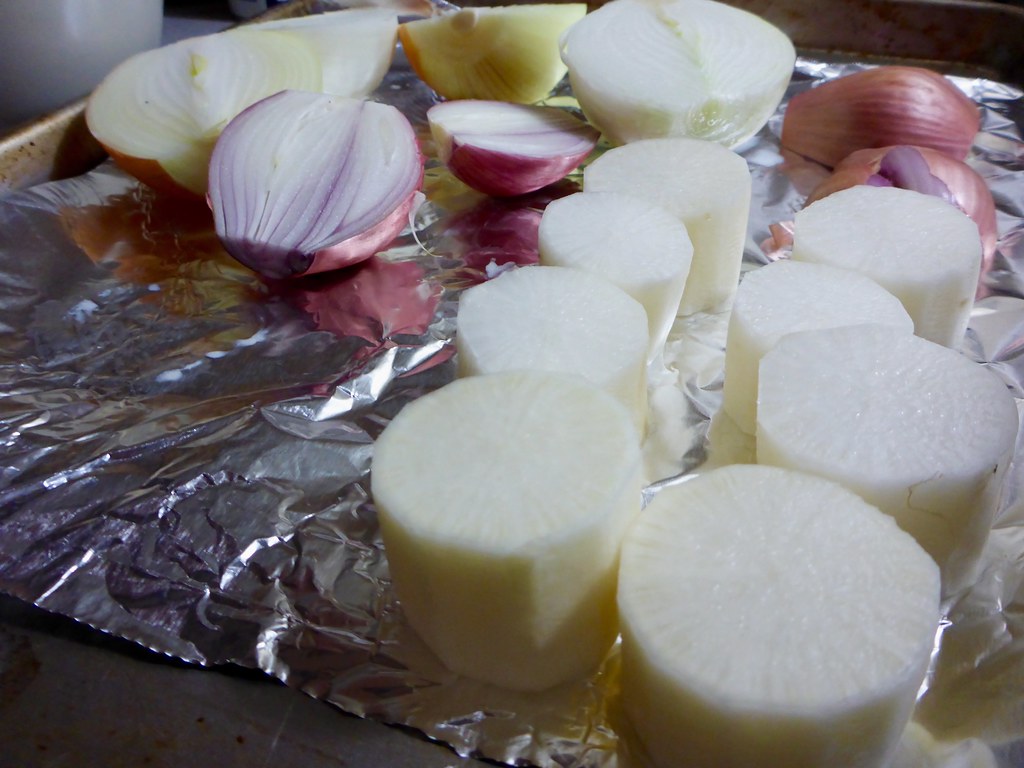
What are the origins of Hủ Tiếu?
Whelp, other than the fact that it originates from China and somehow blended its way through Southeast Asia, everything else is a bit fuzzy. But it has become iconic in Southern Việt Nam and most can at least agree that the broth is pork bone based.
Oh…I forgot to mention that on top of the different the types of Hủ Tiếu you order, you can choose to have it khô (dry noodles served with a dark salty-sweet sauce and the broth on the side) or with nước (broth and noodles served together).
I know….we’re a complicated bunch. But we’re a People that like options.
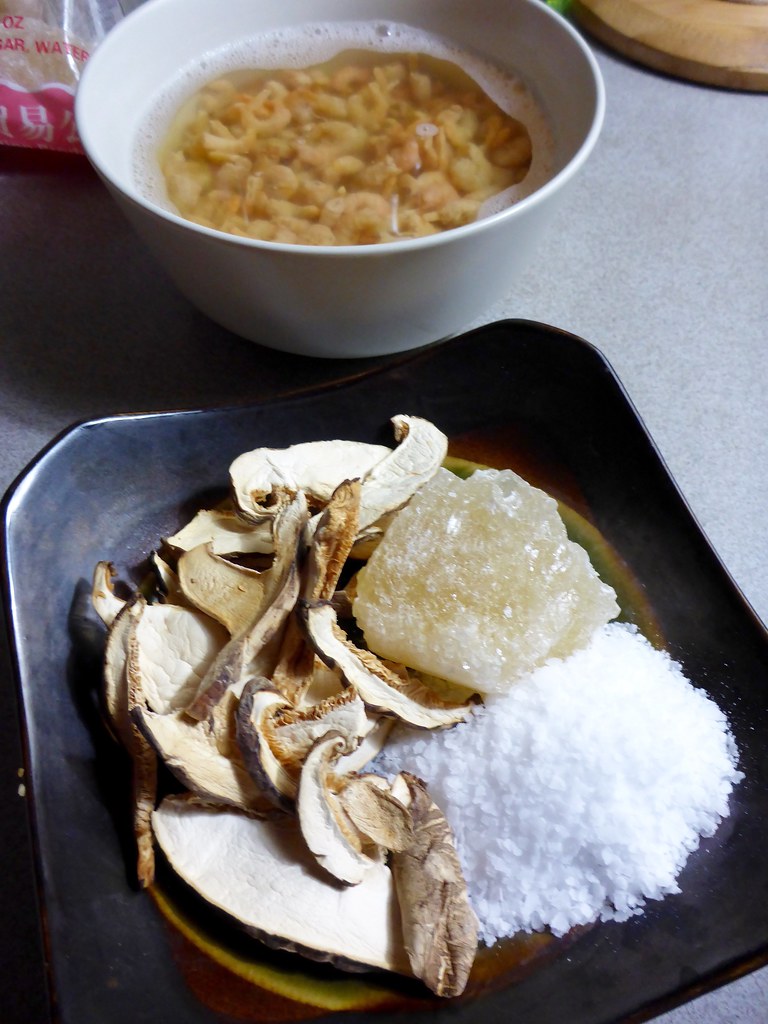
So which type of Hủ Tiếu do I make?
I can’t really say it’s traditionally Mỹ Tho or Nam Vang. And I’ve got to admit, although it sounds trivial, it’s definitely times like these that I wish I could ask Mom. Would she have the right answer? Eh…questionable. But she’d likely give me a confident answer and just tell me to do what tastes good.
Smart woman.
So that’s what I do.
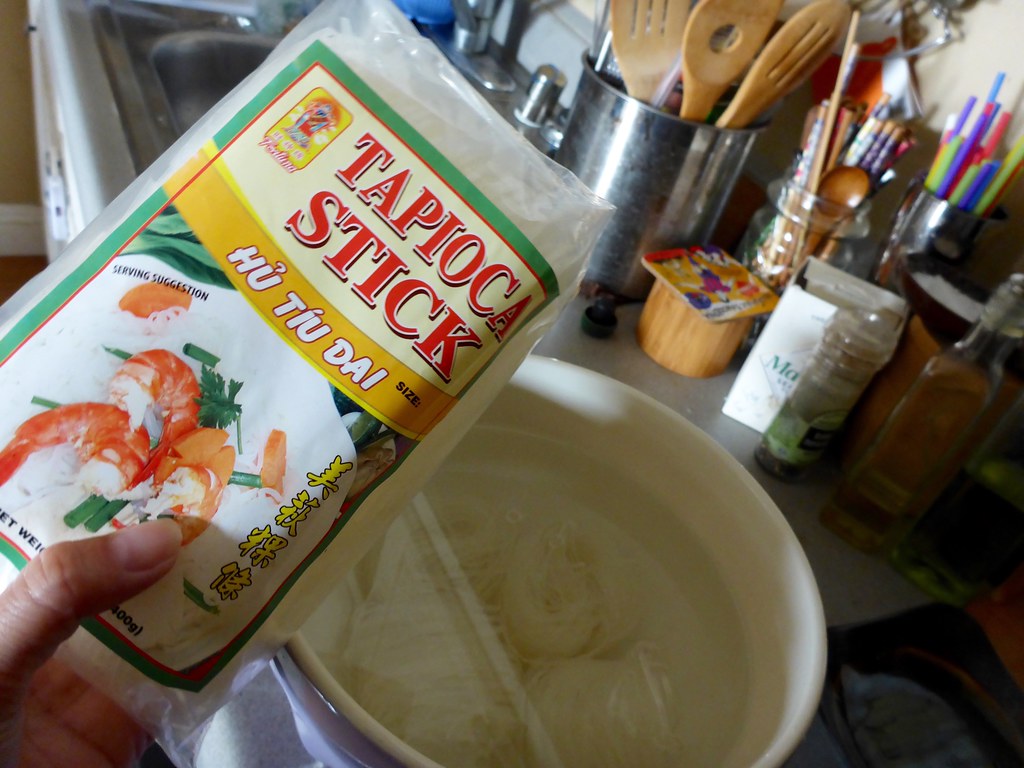
I enjoy Hủ Tiếu broth because it’s light, slightly sweet and not as spice-forward as phở. Again, I do adore phở –but it’s good to have options. But like phở, it should be wonderfully clear like a beautiful consommé.
Most Hủ Tiếu broths start off with lots of pork bones but I like to add chicken bones too. Why miss an opportunity to have a richer broth right?
To start on that consommé-like path, you’ve got to give the bones a good scrub down. Mom always taught us to clean bones and all proteins first before cooking by exfoliating it with salt and thoroughly rinsing it. Then you’ll need to parboil the bones for several minutes, dump out the water and rinse off any of the impurities that have come out before starting the broth in a clean pot.
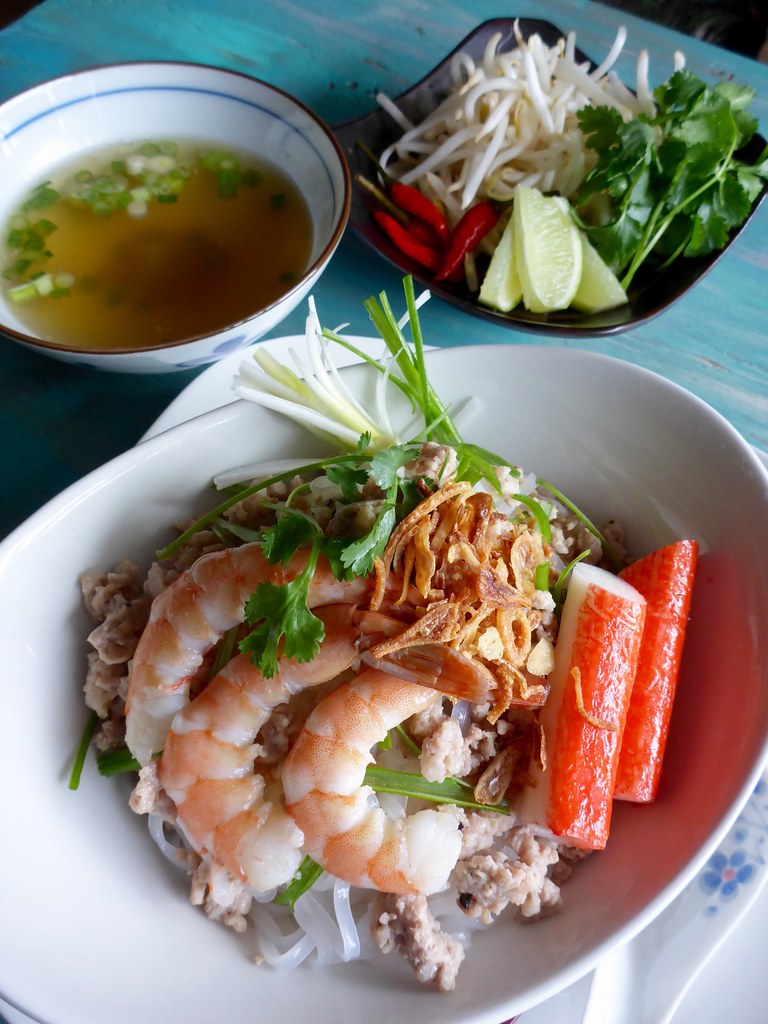
I then throw in some onions, shallots and to provide some sweetness– daikon and dried shrimp. This is when you can also add dried squid that has been rehydrated. I didn’t have any on hand when I made this batch but I will next time. Following those ingredients are some dried shiitake mushrooms (not traditional but I like the added depth of flavor), salt and rock sugar. Once you’ve gotten to this point, let the broth simmer on very low but steady heat for about 2½-3 hours.
And remember that consommé-like goal we’re aiming for? It’s this low and slow simmer that seals the deal. That and also skimming the broth every 30 minutes or so to discard of any impurities that may have risen to top.
I know —this is a labor of love….for my stomach.
I should note that traditionally the broth is seasoned with only salt and not fish sauce. But I’ll admit it, after the broth has simmered for a few hours, I’ve been known to throw in a few dashes of Vietnamese liquid gold if I feel that it needs a bit more magic.
I’m a rebel.
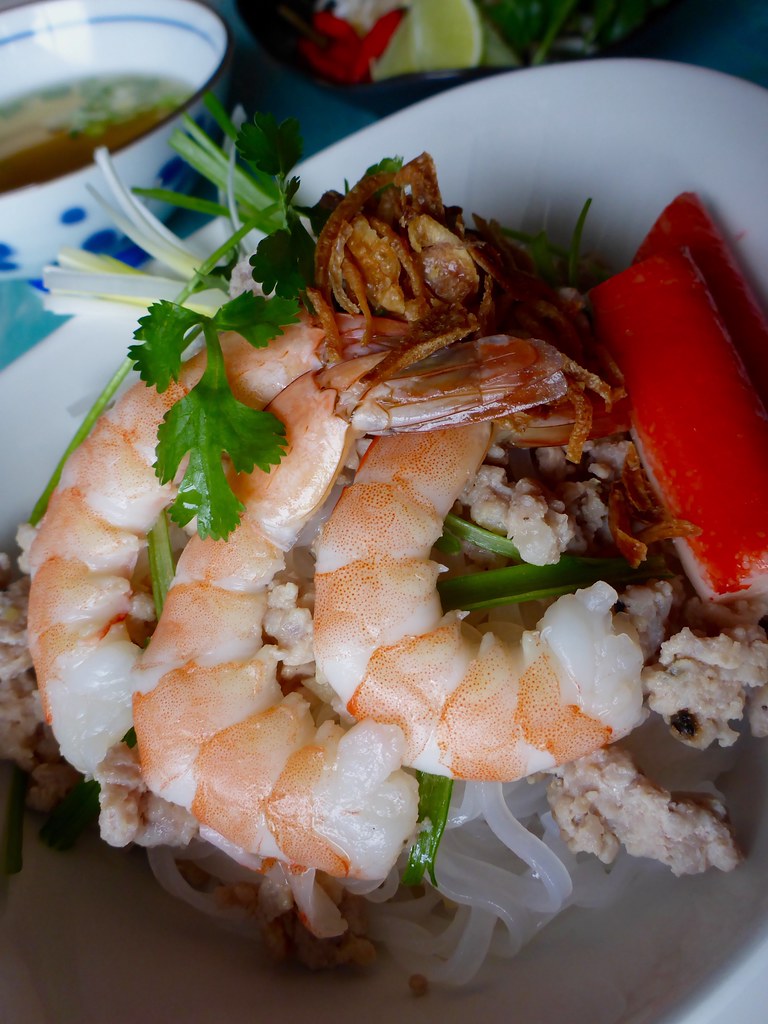
Now let’s spend a few moments talking about toppings, shall we?
I believe across the board for Hủ Tiếu, you’ll find that there will be some variation of pork and whole shrimp. But when it comes to everything else–it’s all fair game.
Common items in various Hủ Tiếu are boiled quail eggs, offal, Vietnamese ham, fried shrimp crisp and sliced beef. And when it comes to pork, it can come in the form of poached, ground or Chinese “barbecue” known as char sui or xá xíu.
They also say that Hủ Tiếu Mỹ Tho should have an abundance of seafood so in addition to the usual suspects, you’ll find toppings like crab claws, squid, fish balls, imitation crab, fish and so forth.
For me, I’m not a fan of many offals, let alone poached pork liver. Don’t get me wrong– I do love a good pâté but liver in this soup form has never got me excited. So I don’t include it. And as much as I love all kinds of eggs, boiling and peeling them are just too tedious for me –so I nix those too. And no–I don’t buy or enjoy canned quail eggs. They taste very metallic to me.
I generally stick to the basics such as poached shrimp, imitation crab and browned ground pork. But if I really feel like going the extra mile (or if I was smart and kept a stash in the freezer), I’ll make xá xíu, too.
Oh–and don’t forget the accompanying veggies, herbs, chilies and fresh lime!
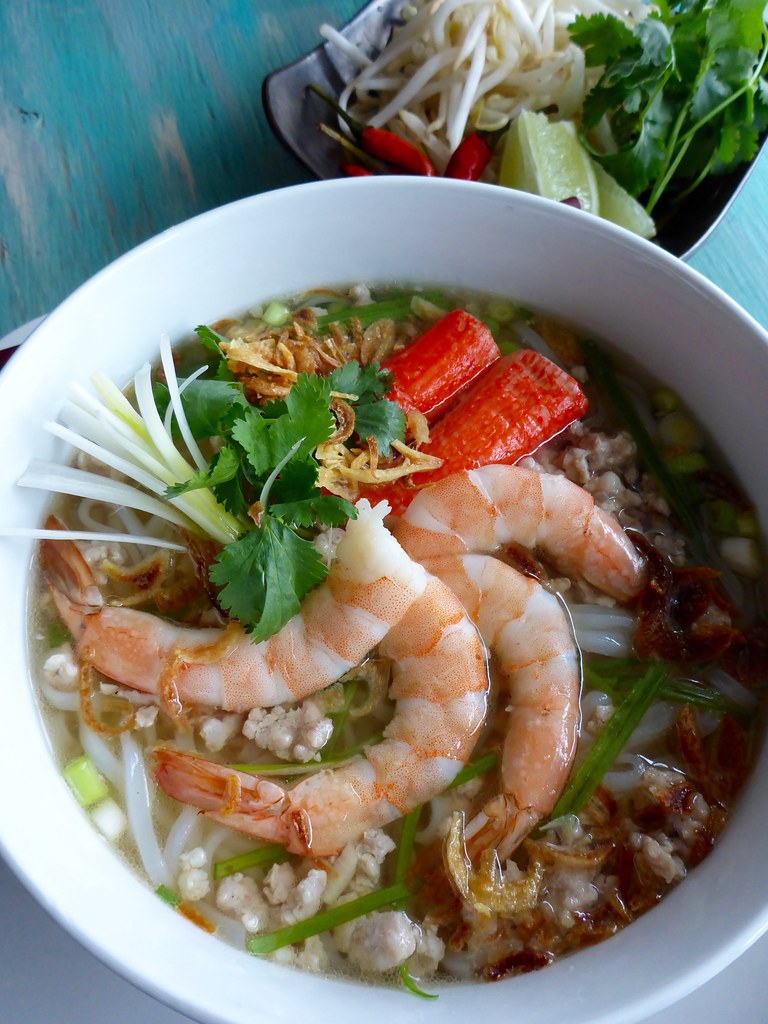
Now let’s talk about the noodle types.
One of the reasons why I like Hủ Tiếu so much is that most of the time, it is served with what is called Hủ Tiếu Dai which are tapioca based noodles. The texture is much more firm than phở noodles have — which are typically rice flour based. Hủ Tiếu Dai are chewy in similar ways to why I adore bucatini pasta – but without the hole in the center of the noodle. Delish.
But you can also find Hủ Tiếu served with standard rice noodles or even Chinese egg noodles. In those cases, it’s called Hủ Tiếu Mi – also good, but just different. And if you can’t decide which you prefer, some places will serve the different noodles mixed together for you!
Told you we like options.
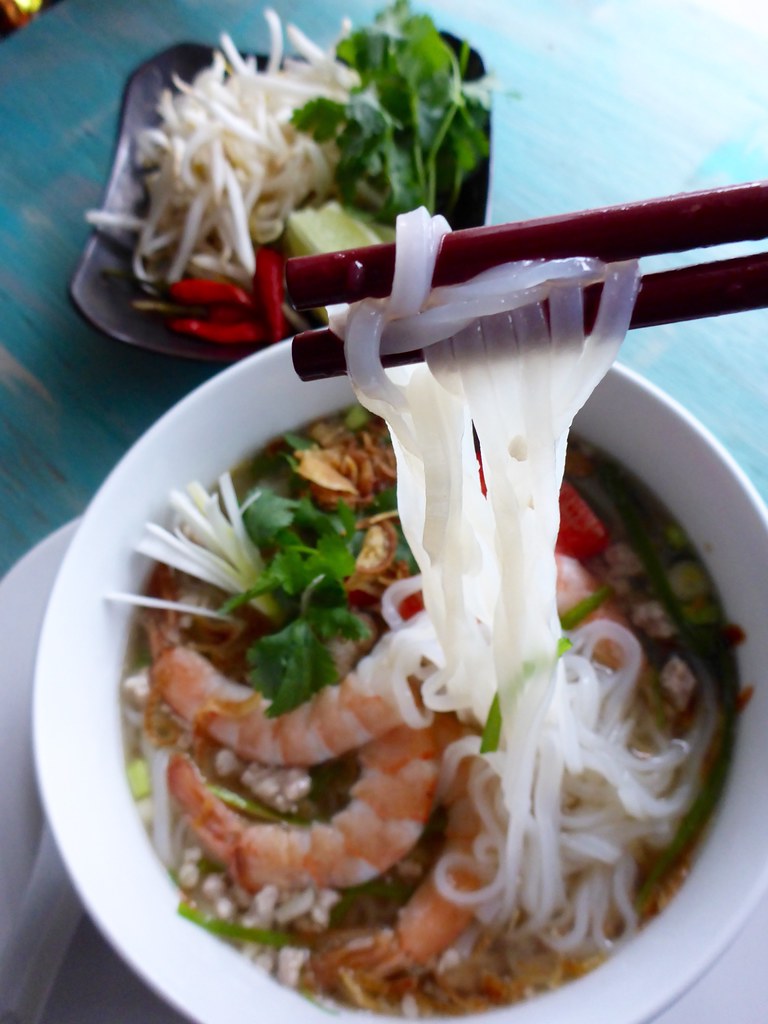
Lastly, let’s chat a bit more about what I mentioned earlier on having it served khô or with nước.
If you were to ask for a bowl of Hủ Tiếu (whether it be Nam Vang, Mỹ Tho or Tàu), you’ll likely have a wonderful steaming bowl of noodle soup delivered to you. The noodles and broth are in one bowl — and it’s a party. Sometimes they’ll call it Hủ Tiếu Nước (with broth) but generally if you say “Hủ Tiếu”, that’s what you’ll get. And it’s glorious.
However, some spots will have Hủ Tiếu Khô available and I’ll tell you, it’s also glorious. Essentially, the bowls are assembled nearly the same with the exception of two things. The noodles will have a rich salty-sweet sauce either drizzled on top or underneath the noodles and the the broth will be served in a small bowl on the side. You’ll stir the noodles up with that rich sauce — and of course you can pour some of the broth in it too. But this way, you’ll get to enjoy the flavors of the noodles, toppings sauce and then slurp the broth separately. And I’ll tell ya, when I was young, I wasn’t really much into the broths of noodle soups. Sure–I liked some of it but I was more focused on the GOODS! This method was perfect for me! Plus, the sauce adds another level of flavor—yes, it too, is glorious.
Nowadays I enjoy both so don’t make me pick sides.
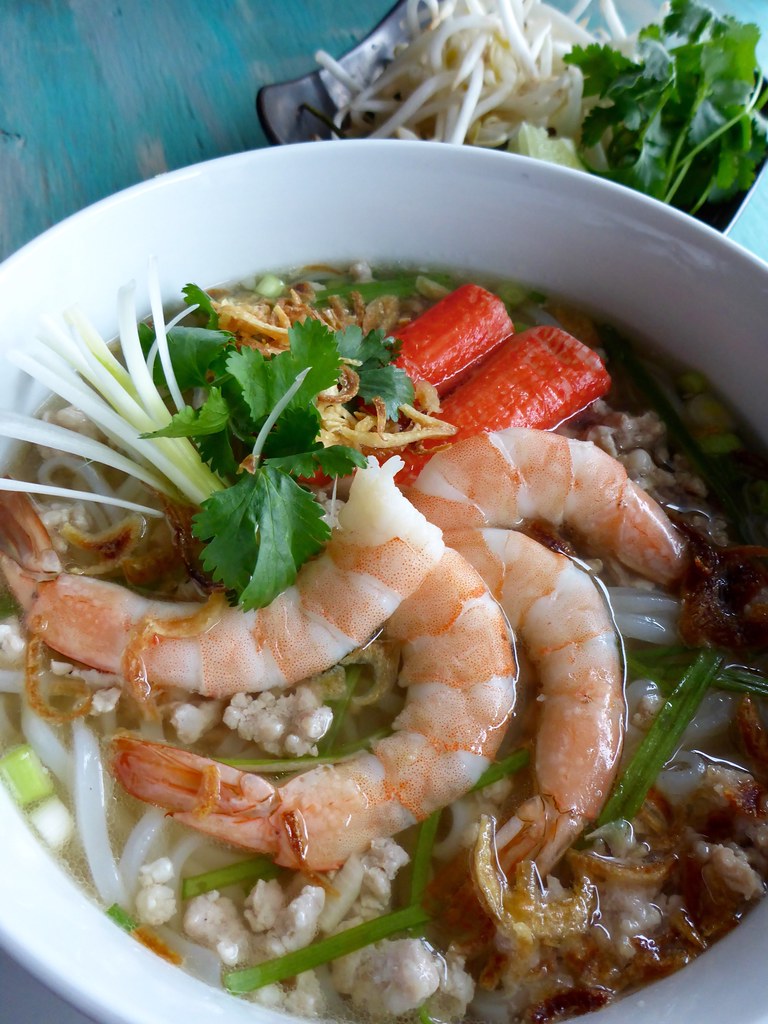
I know. Probably more than you ever wanted to know about Hủ Tiếu but I was feeling wordy today. I blame it on the weather. ❤
Ăn Ngon!
________________________________________________________________
Hủ Tiếu {Vietnamese Pork and Seafood Noodle Soup}
Makes approximately 6 bowls
Ingredients:
4 pounds pork bones
2 pounds chicken bones
kosher salt
water
1 large yellow onion, quartered
1 large shallot (or 2 small ones), quartered
1 medium-sized daikon, peeled and cut into small chunks
1 ounce dried shiitake mushrooms
1 small rock sugar piece, about 1 tablespoon
½ cup dried shrimp that has been rehydrated with boiling water, rinsed and drained
3-4 dried squid that has been rehydrated with boiling water, rinsed and drained
1 tablespoon peppercorns
1 pound ground pork
½ tablespoon fish sauce
½ teaspoon pepper
2 tablespoons vegetable oil
1 tablespoon minced garlic
½ pound shrimp, shelled and deveined
1 package Hủ Tiếu Dai– chewy tapioca noodles
¼ pound imitation crab, cut into 2 inch pieces
herbs and veggies: fried shallots, fried garlic, bean sprouts, cilantro, culantro, chilies, limes, scallions, etc.
other protein options: pork slices (poached or char sui/xá xíu), boiled quail eggs, liver or other offal, sliced squid, etc.
Sauce for serving Hủ Tiếu Khô:
2 tablespoons vegetable oil
1 tablespoons minced shallots
2 garlic cloves, minced
¼ teaspoon 5 spice powder
3 tablespoons soy sauce
3 tablespoons oyster sauce
½ cup Hủ Tiếu broth
Place the pork and chicken bones in the sink and liberally sprinkle salt over them. Using the salt as an exfoliant, scrub the bones well and rinse. Place the scrubbed bones in a large pot and cover with cold water. Set the heat to high and boil or 5-7 minutes. At this point, some of the impurities and “scum” will have boiled out. Place a colander in the sink and carefully pour the bones in to drain. Rinse the bones thoroughly to remove all the impurities. If you intend on using the same pot for the Hủ Tiếu broth, wash it well before adding the bones back in. Do not skip any of the above important steps in order to get a clear and clean broth.
Pour in about 6 quarts of water over the cleaned bones and bring to a boil. Add the onions, shallots, daikon, shiitake mushrooms, rock sugar, rehydrated shrimp, squid, peppercorns and 2-tablespoons kosher salt. Stir until the rock sugar has dissolved and lower the temperature to a gentle simmer. Allow the broth to simmer, uncovered, on very low heat for 2½-3 hours. During that time, periodically skim and discard any impurities that may have formed on top of the broth. At the end, you’ll want a semi-dark but very clear broth like a consommé. Before serving, taste the broth and add additional salt if needed.
While the broth simmers, prepare the toppings.
In a small bowl, mix the pork, fish sauce and pepper together. Heat the vegetable oil in a skillet over medium. Sauté the garlic until fragrant but not browned. Add the pork and cook thoroughly while crumbling up the ground meat. Take off heat and set aside.
Place the shrimp in a mesh metal strainer. Dip the strainer into the simmering broth and stir the shrimp around so that it poaches in the hot liquid. Once the shrimp becomes bright pink, shake lightly to remove excess liquids and set aside.
Prepare the noodles according to the directions on the package. Usually it will instruct you to soak the noodles for 10-15 minutes in hot water and then boil for a quick few minutes before draining well. Set aside.
To assemble if serving the broth with the noodles, divide the cooked noodles among the bowls. On top of each bowl, place 3-4 poached shrimp, a couple of pieces of imitation crab and a few spoonfuls of cooked ground pork. Sprinkle on the fried garlic, fried shallots and chopped scallions. Ladle the boiling broth over the noodles and toppings. Serve with fresh herbs, chilies and limes on the side.
If serving Hủ Tiếu Khô (dry noodles), prepare the accompanying sauce by heating the oil over medium low in a small saucepan. Add the shallots and cook until just golden. Add the garlic and cook for an additional minute, stir to avoid it from burning. Sprinkle in the 5 spice powder and cook for 30 seconds before adding the remaining sauce ingredients. Raise the heat so that the liquids boil and then reduce to a simmer. Allow the sauce to cook for 2-3 additional minutes. Assemble the Hủ Tiếu Khô by adding a heaping spoonful of the dark sauce at the bottom of each bowl. Top with the cooked noodles, 3-4 poached shrimp, a couple of pieces of imitation crab and a few spoonfuls of cooked ground pork. Sprinkle on the fried garlic, fried shallots and chopped scallions. Serve with a small bowl of hot broth on the side along with fresh herbs, chilies and limes.
